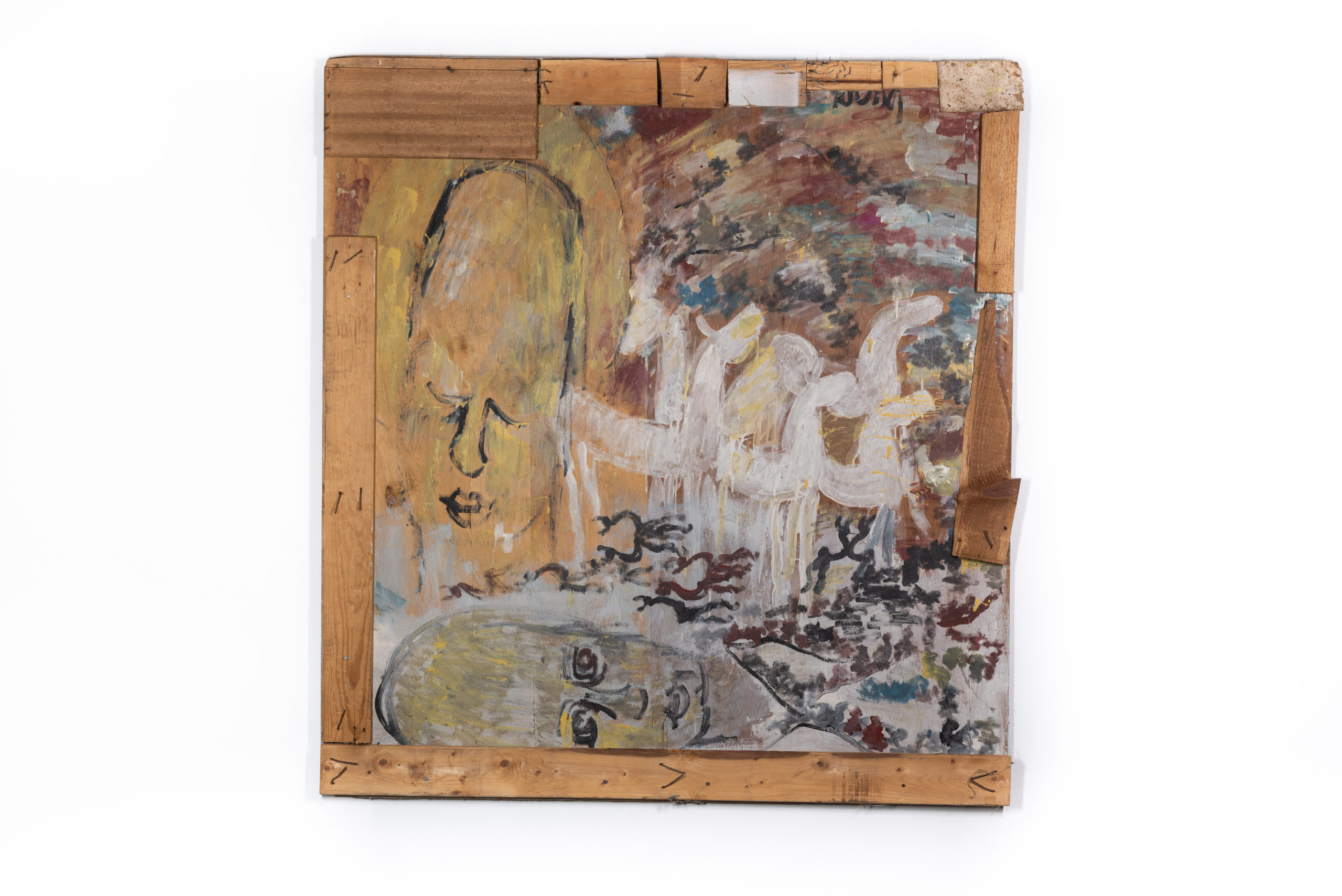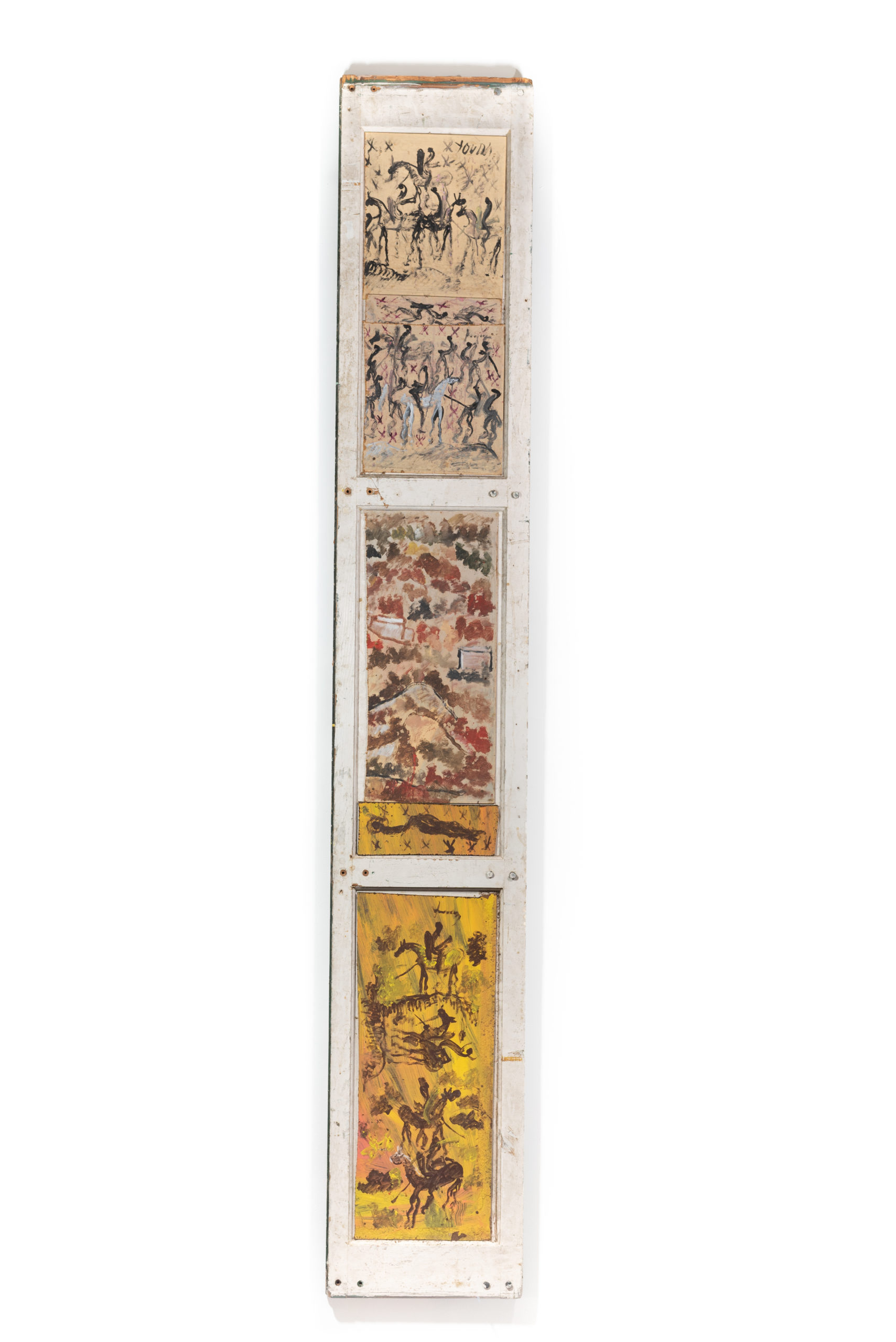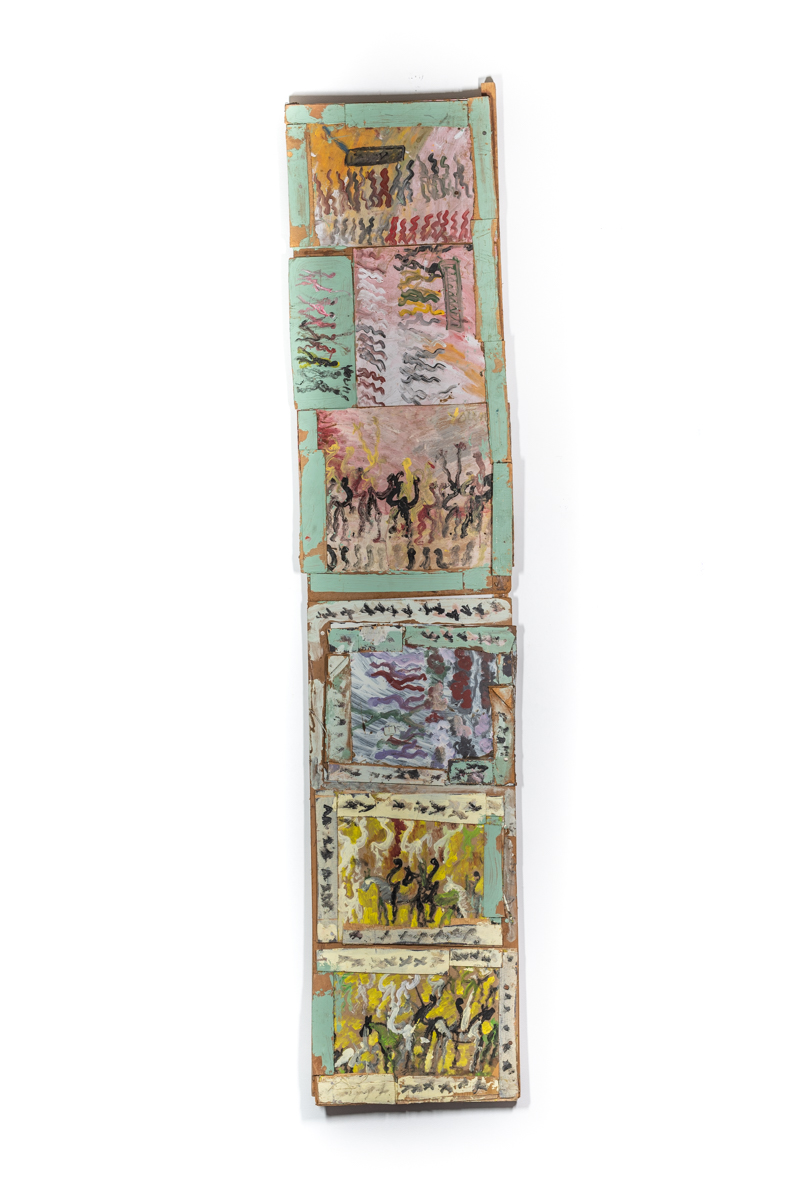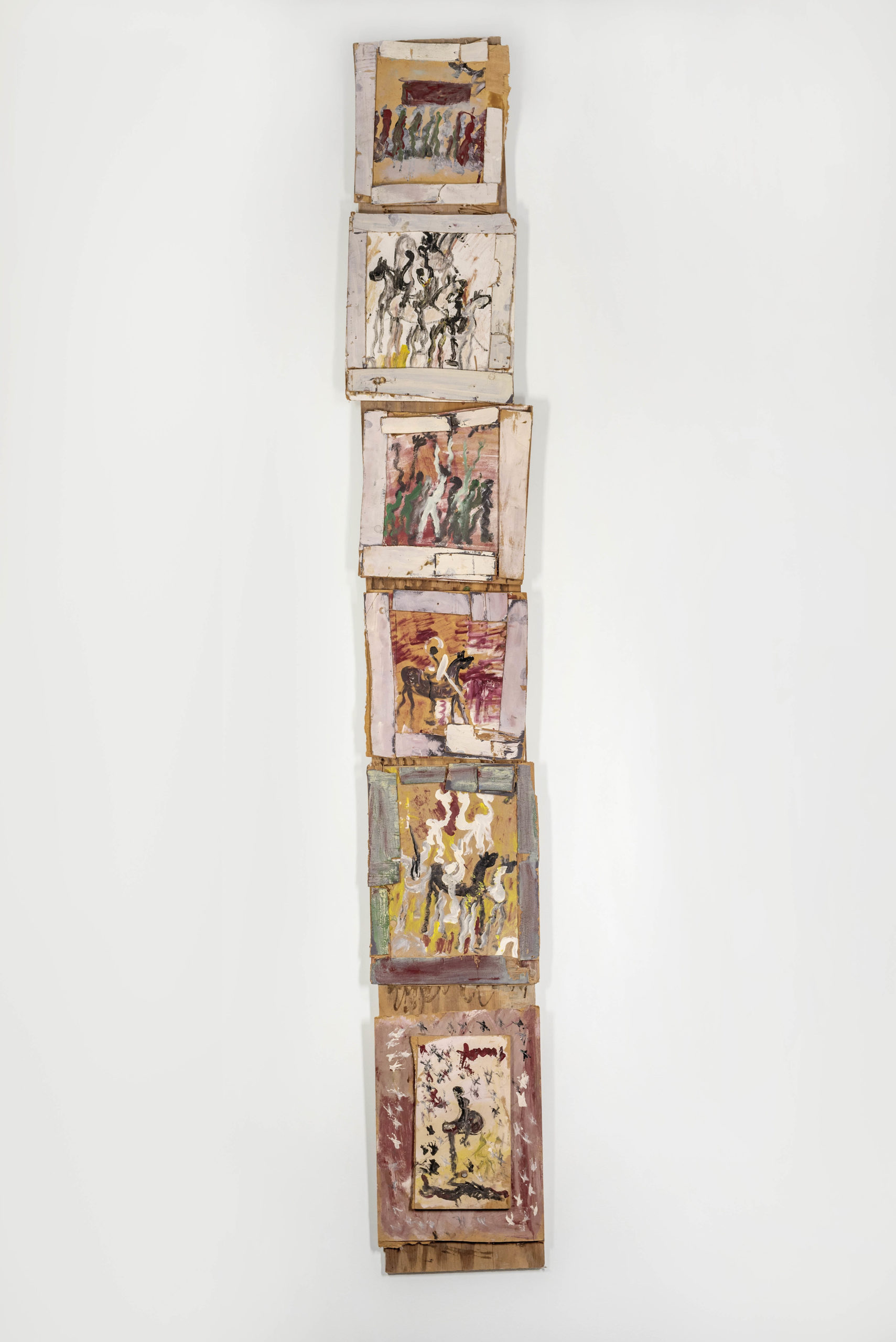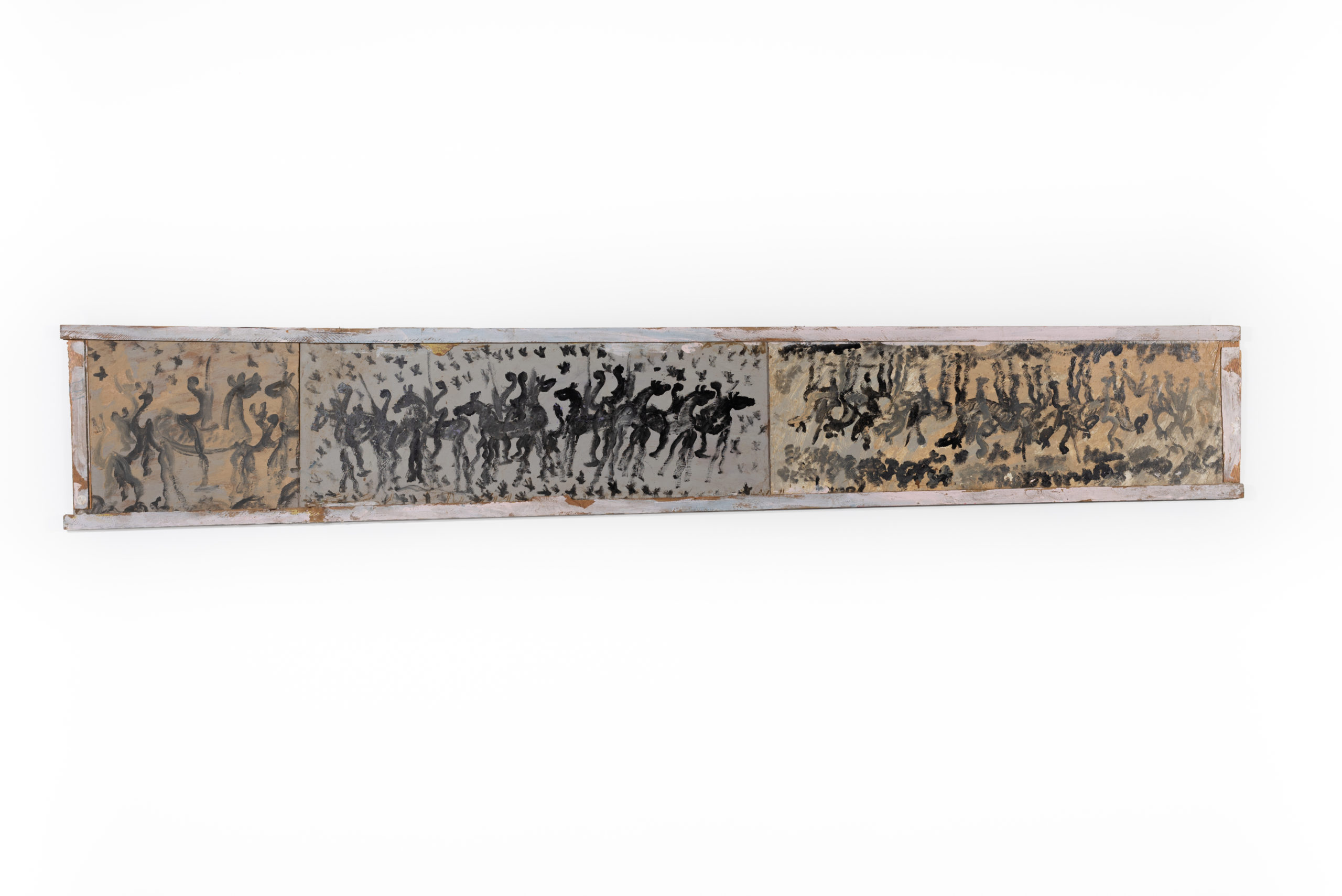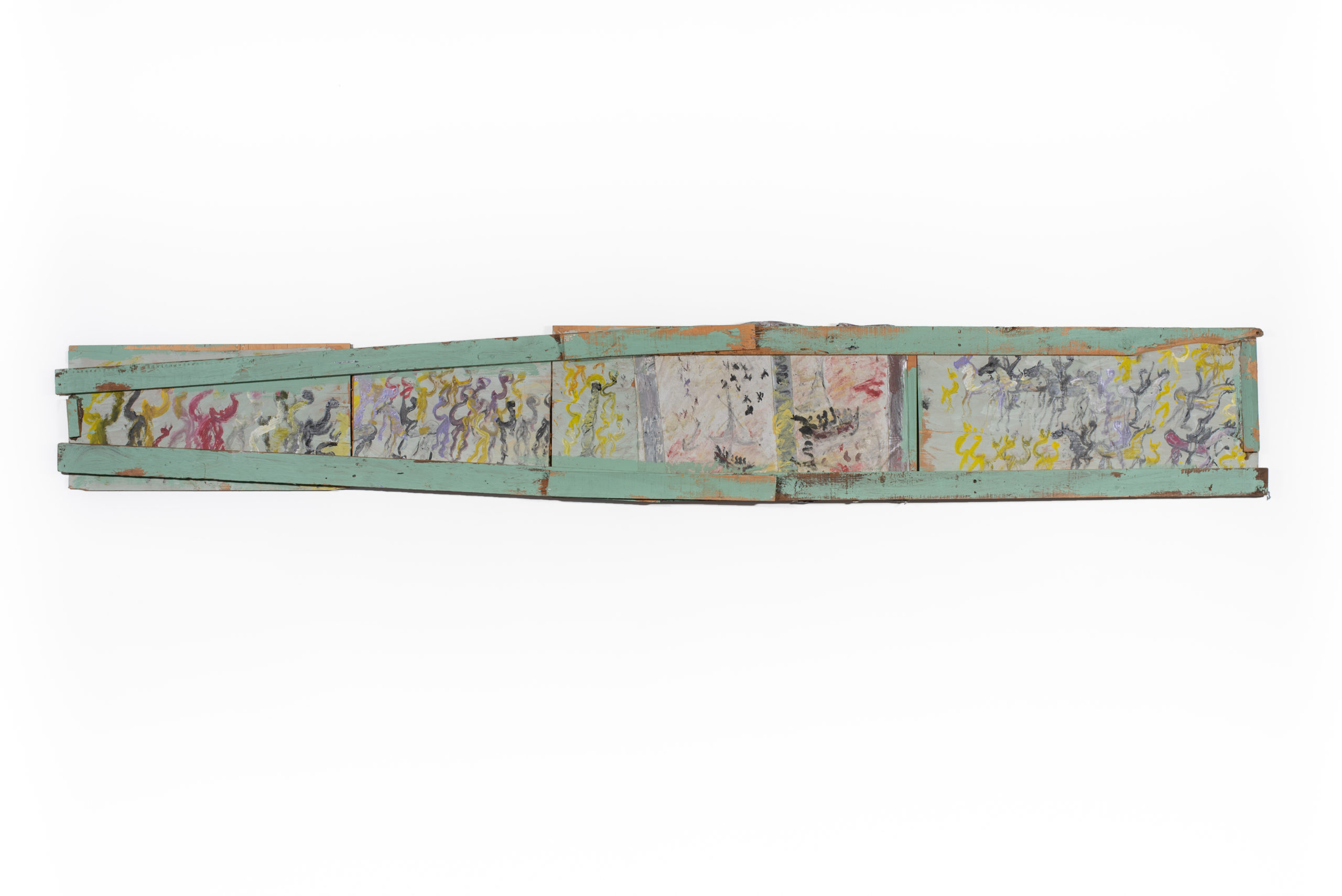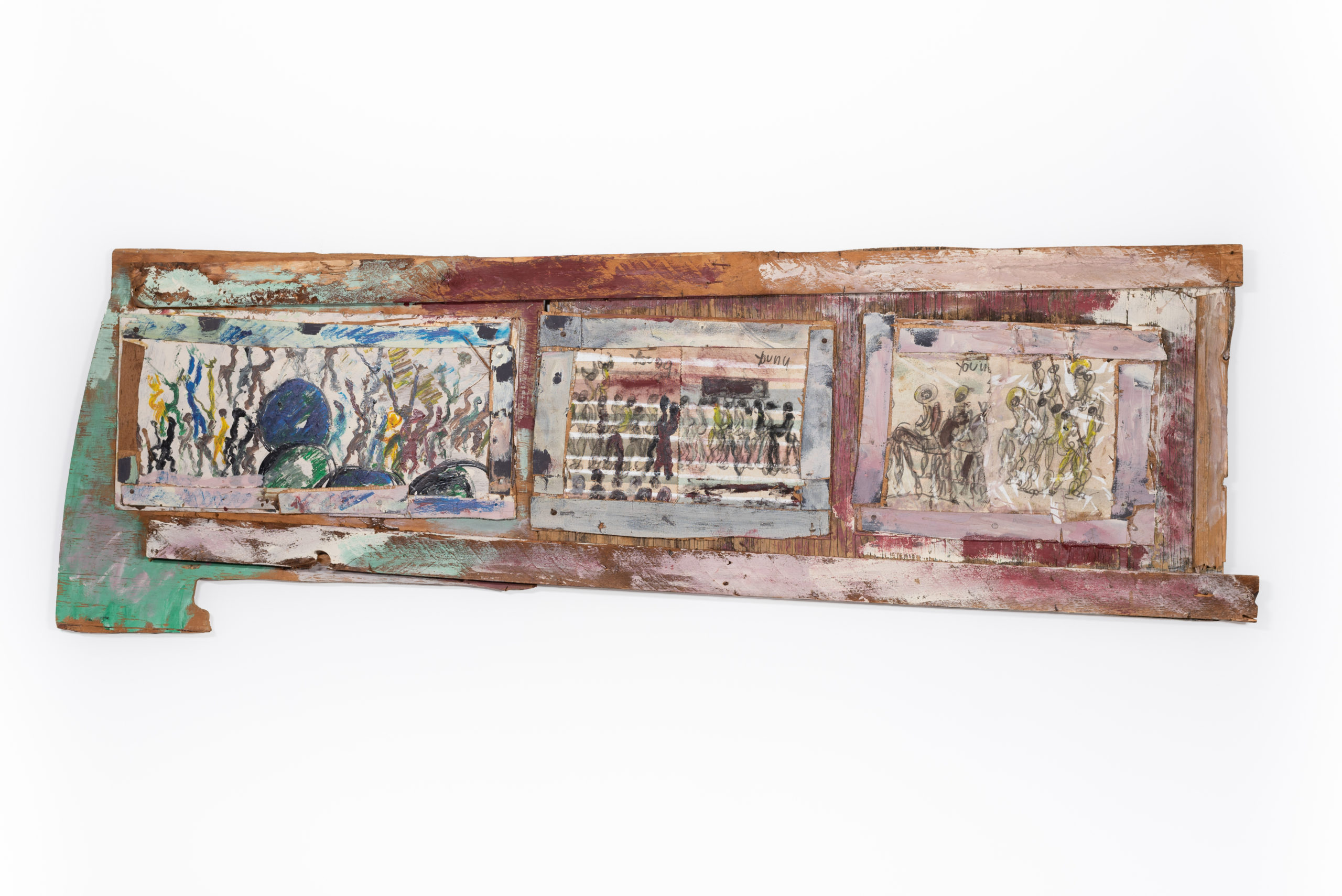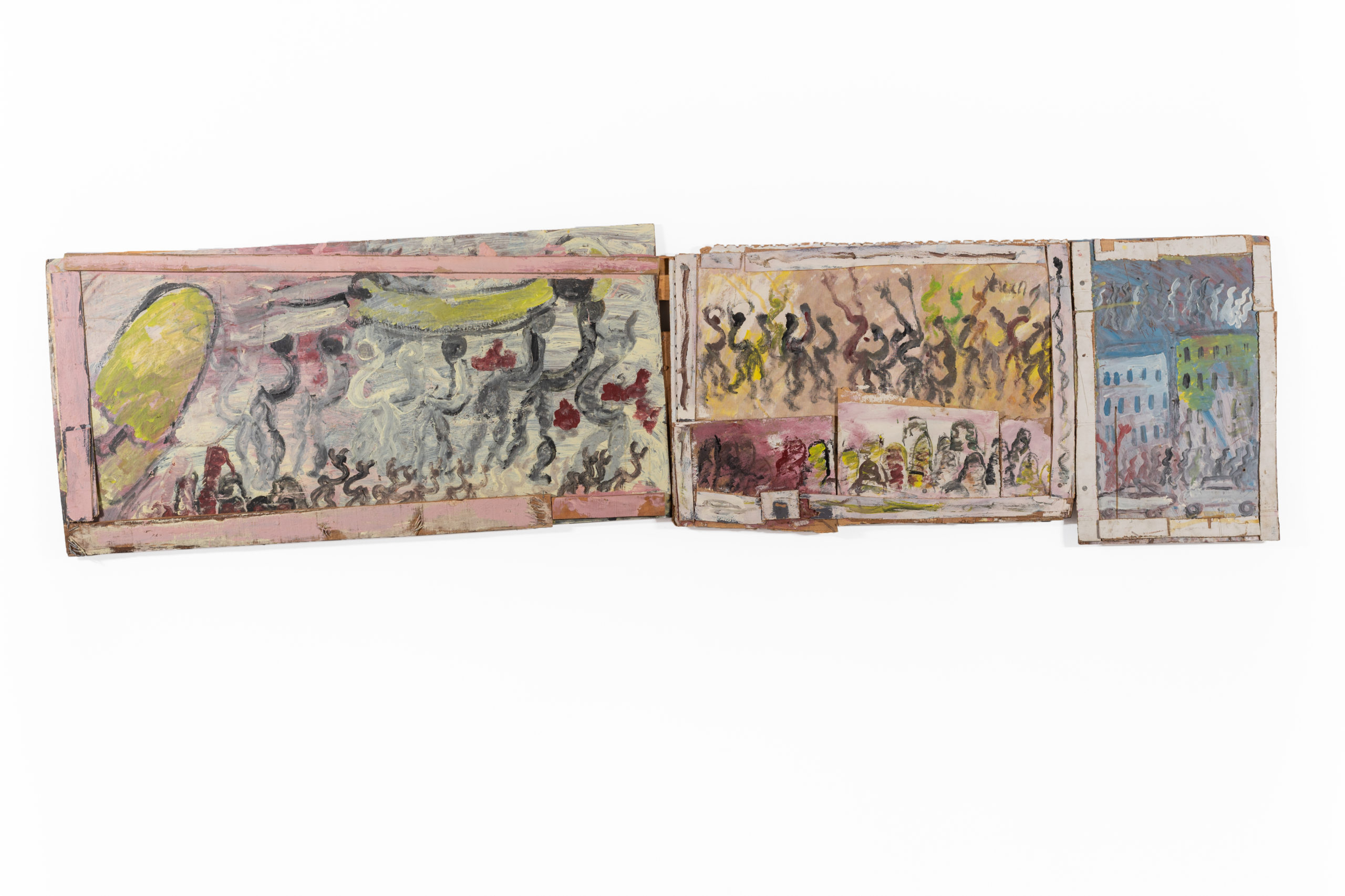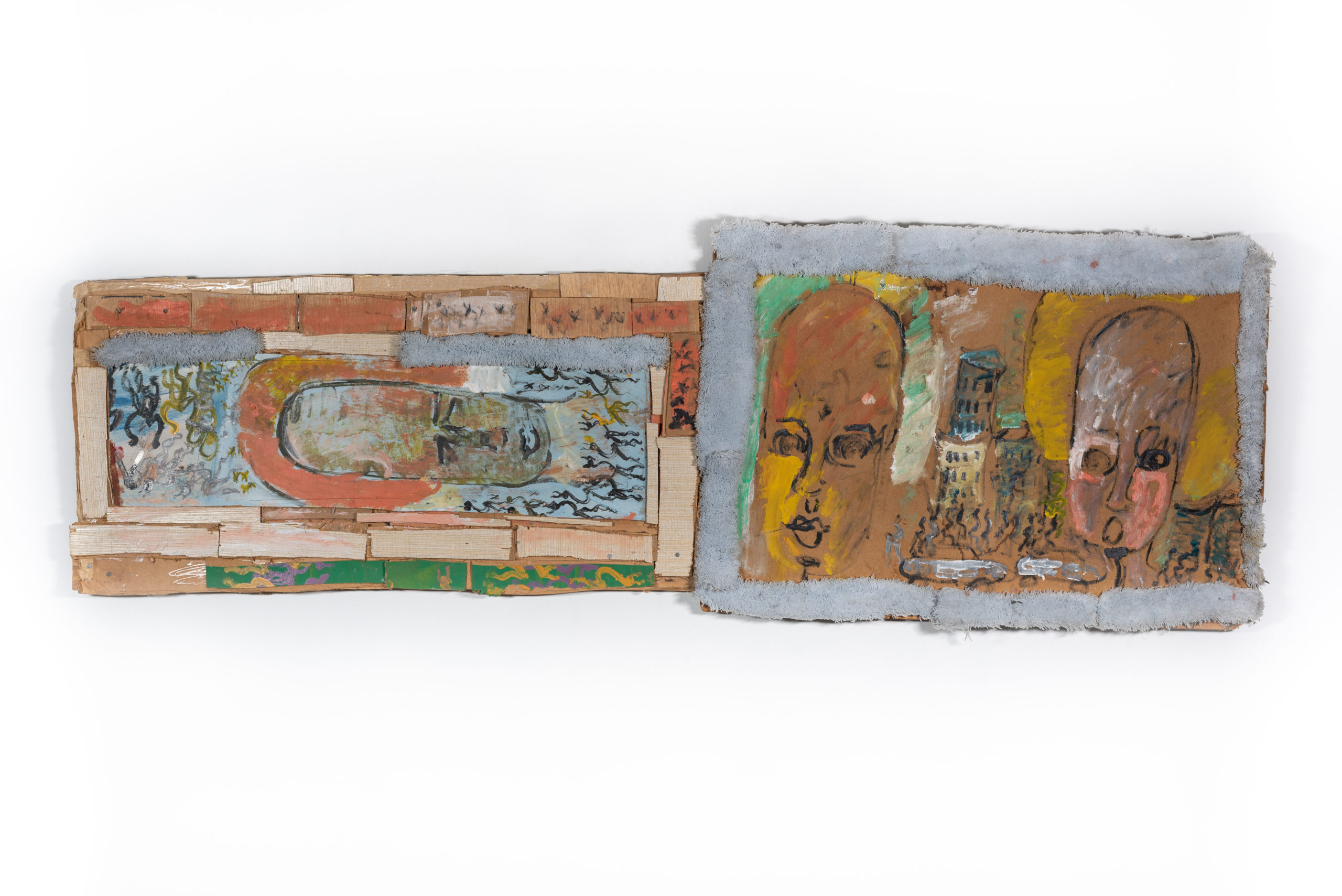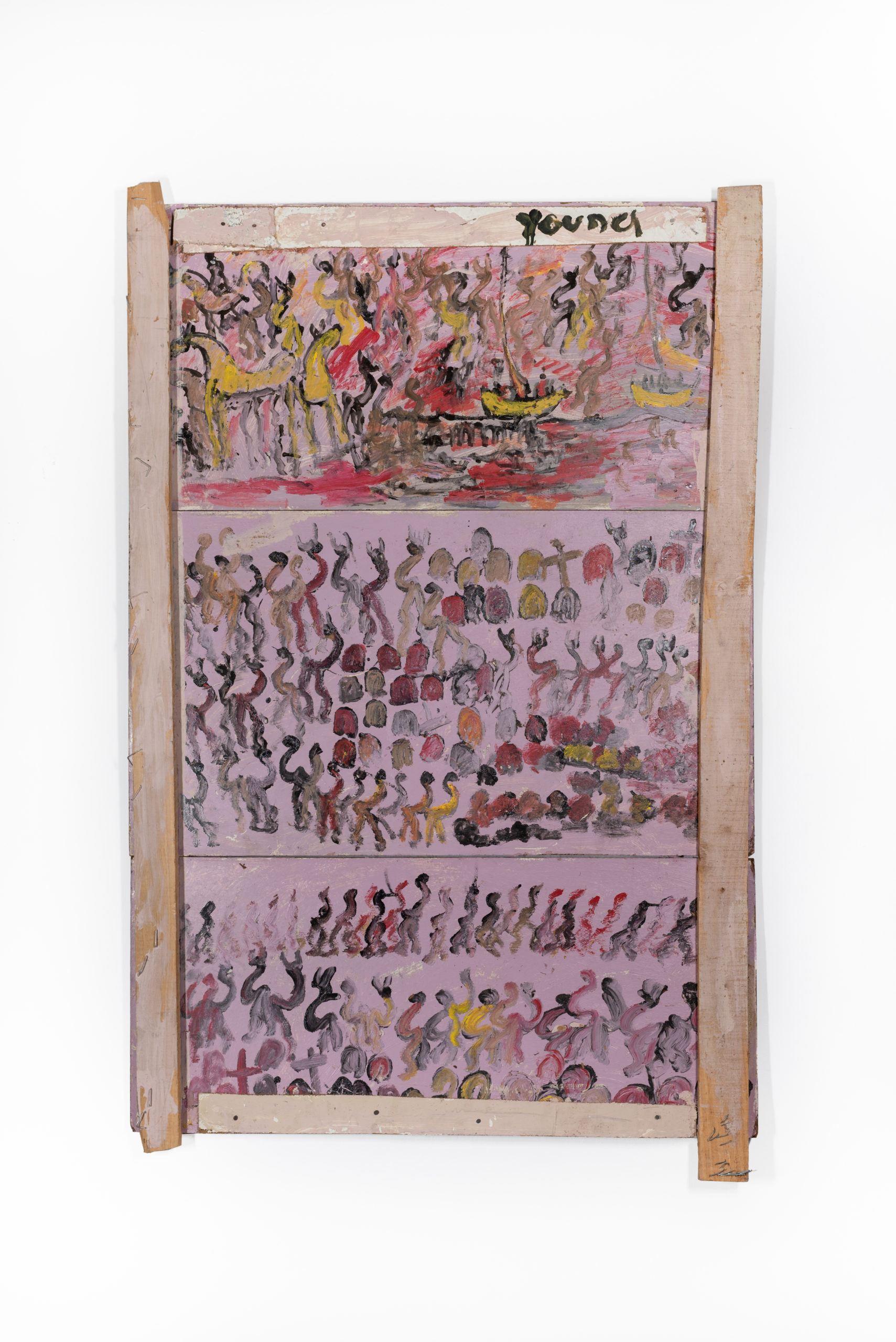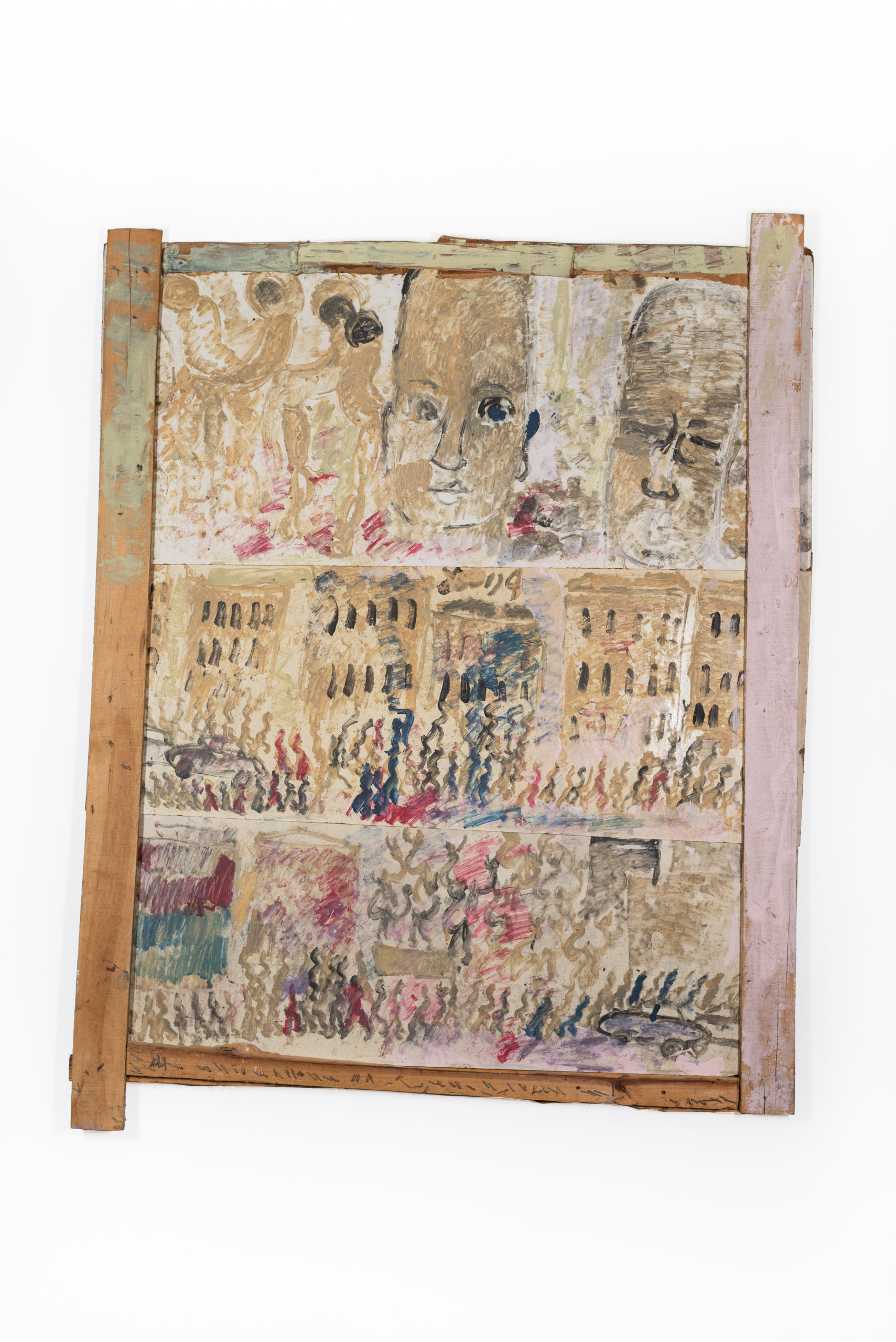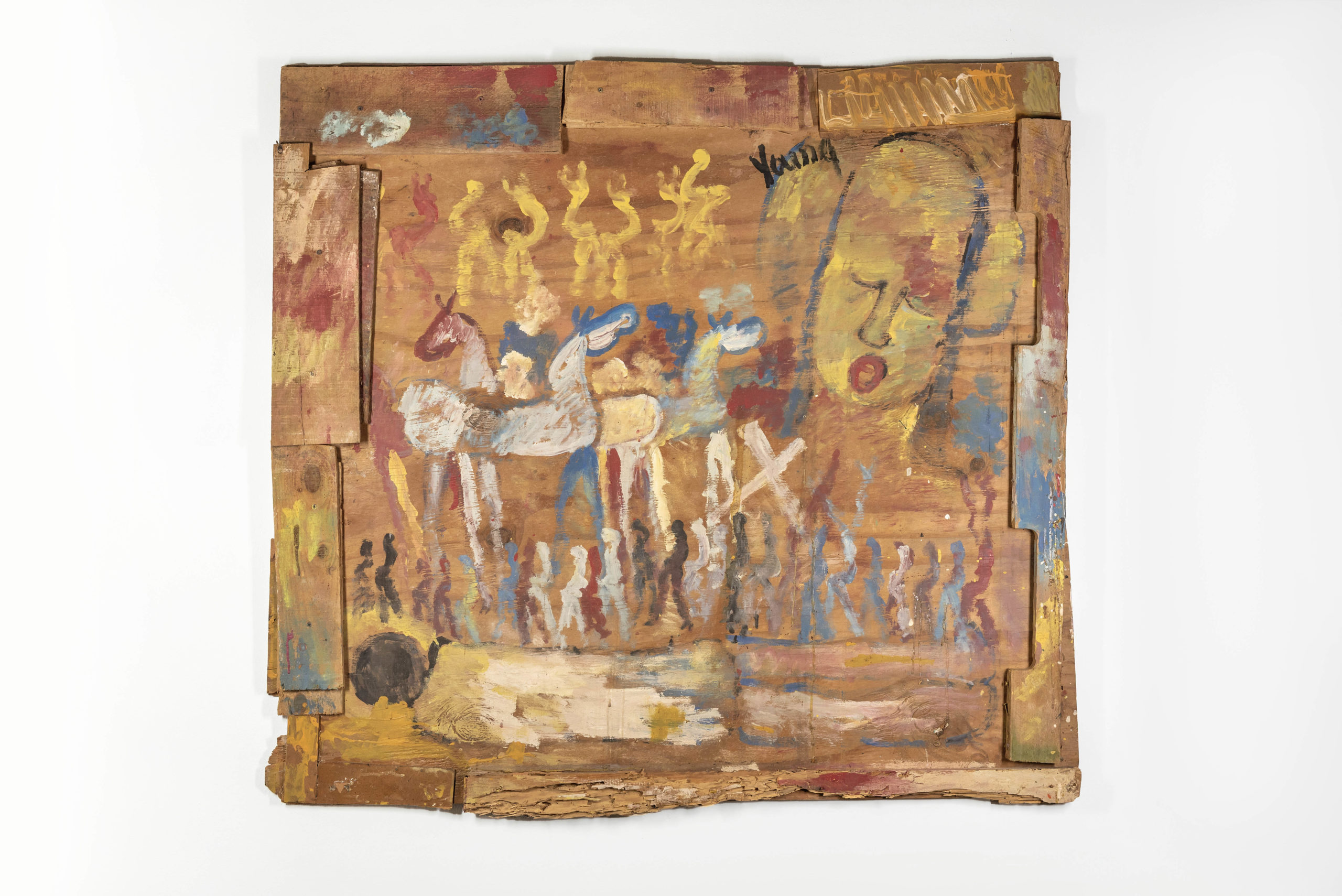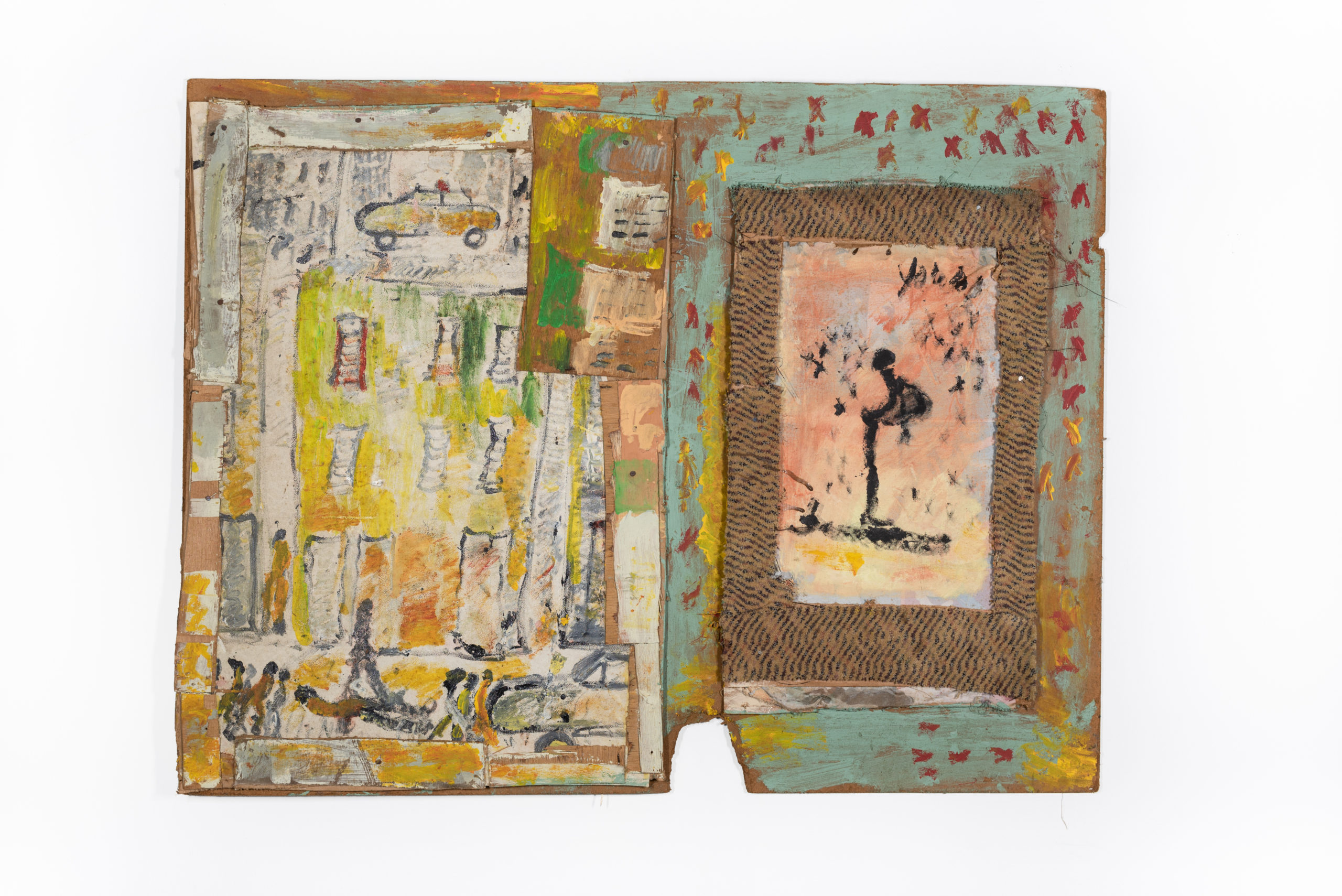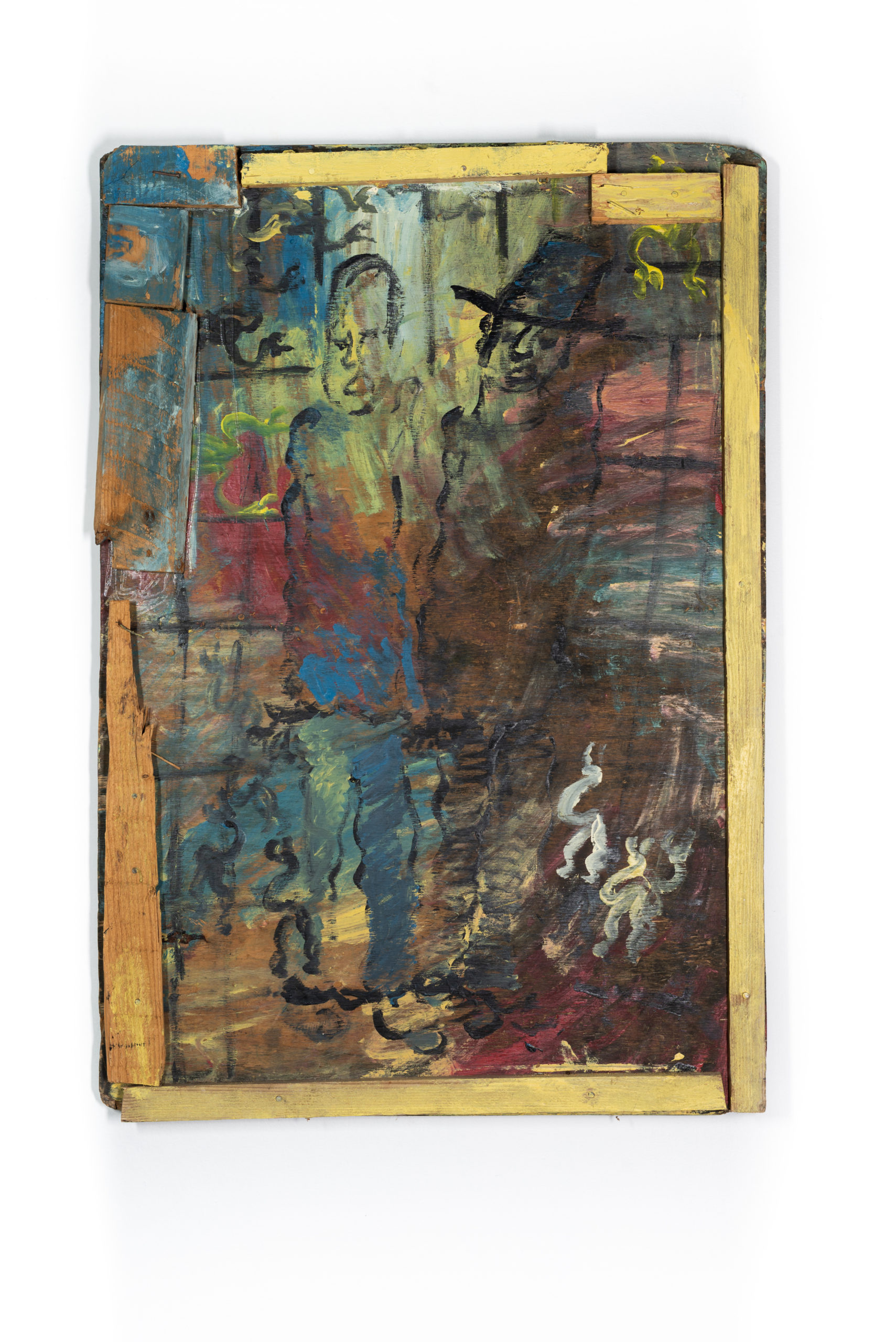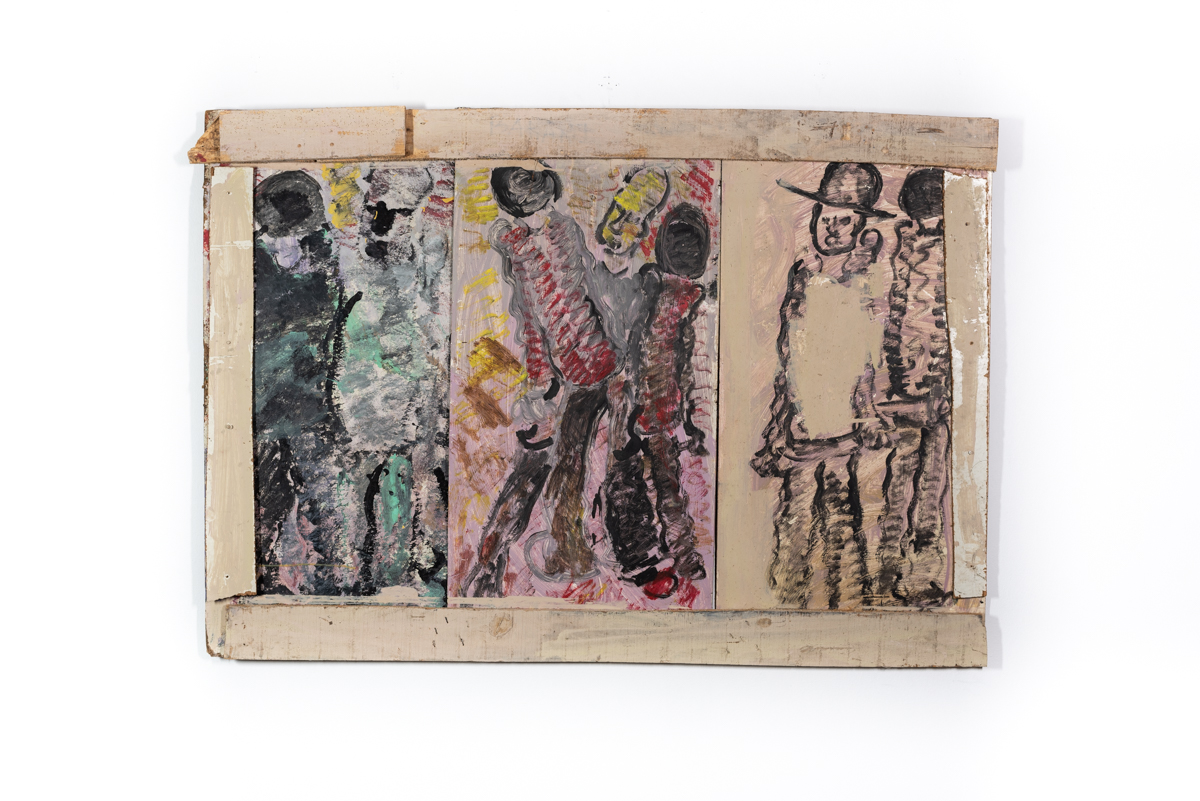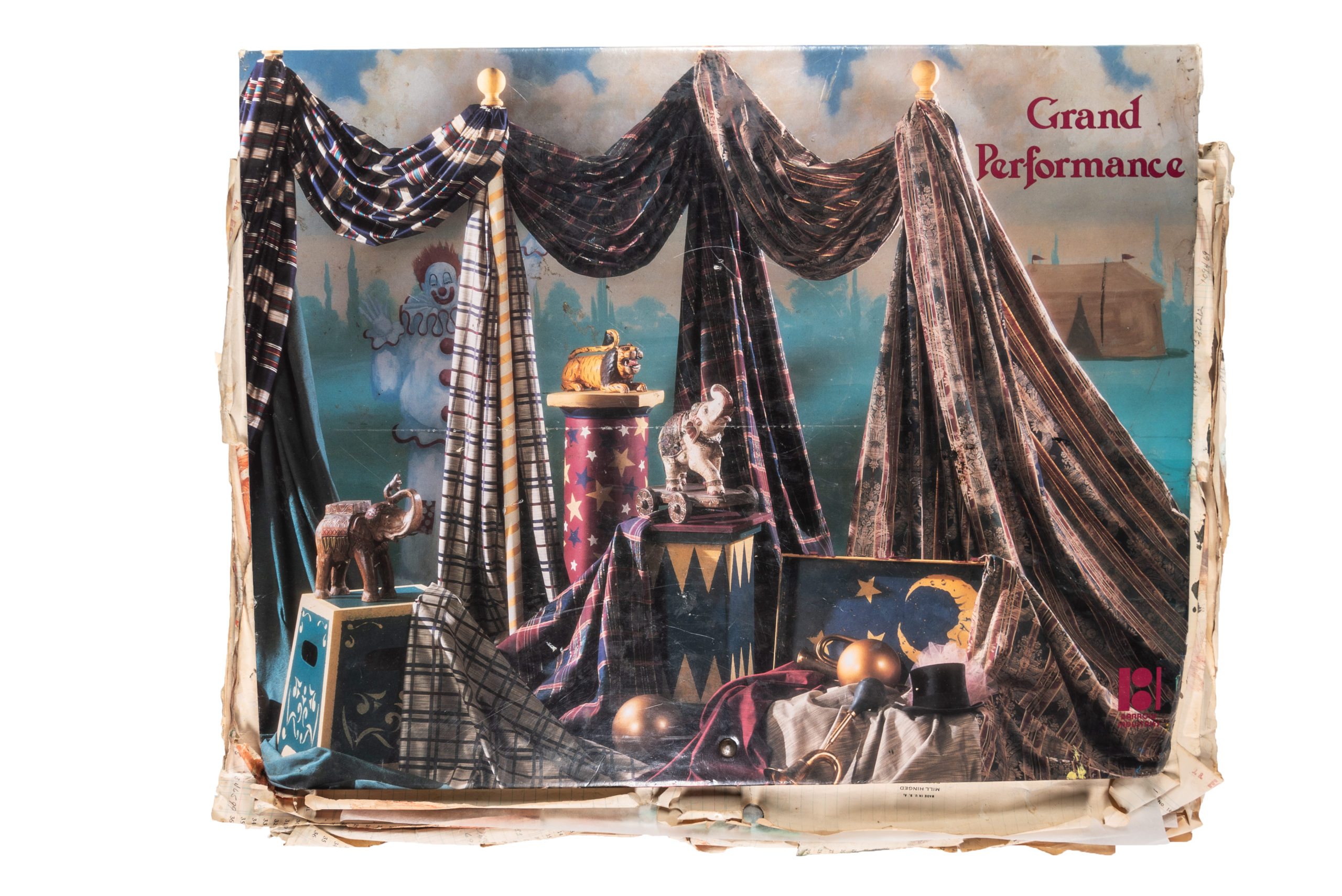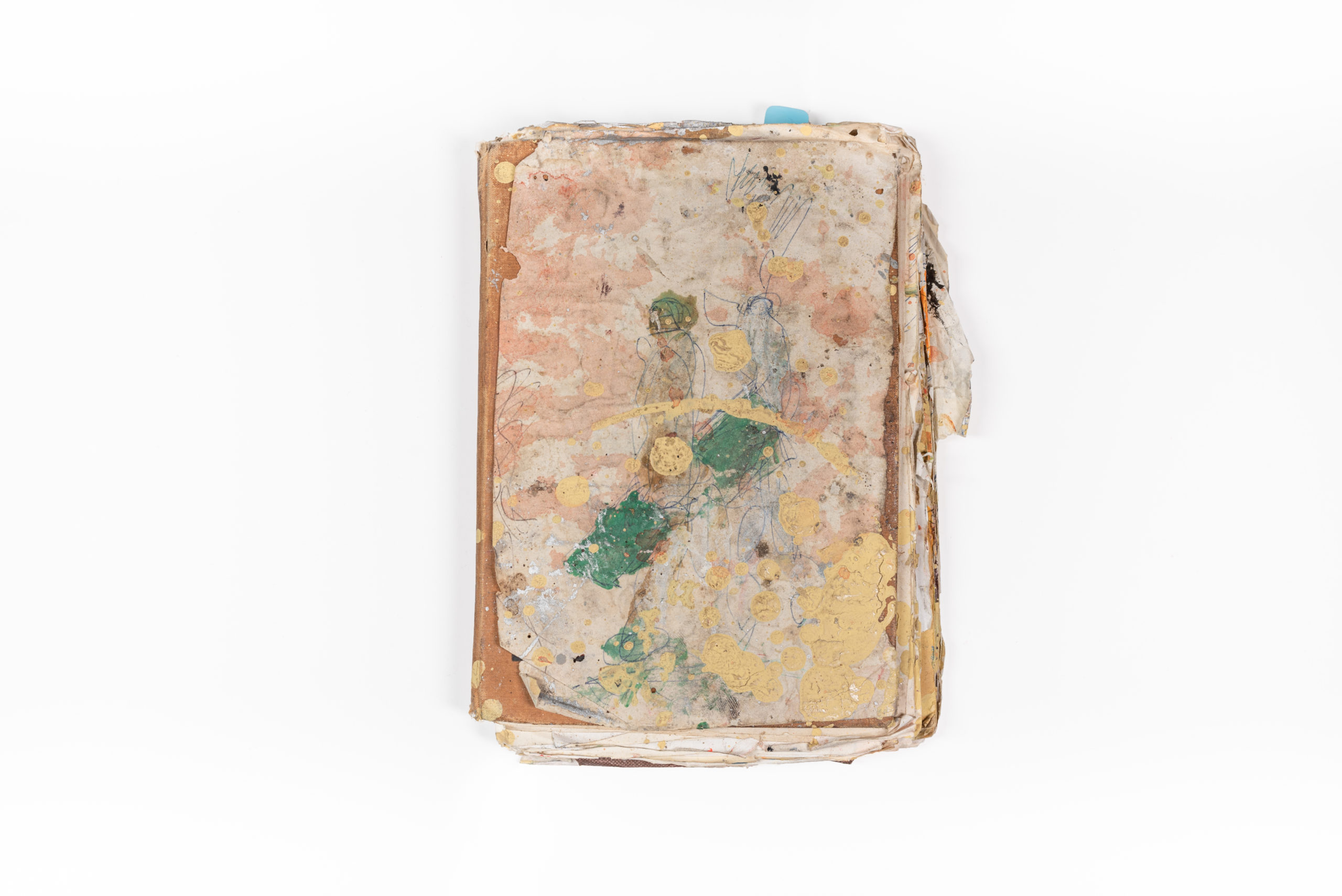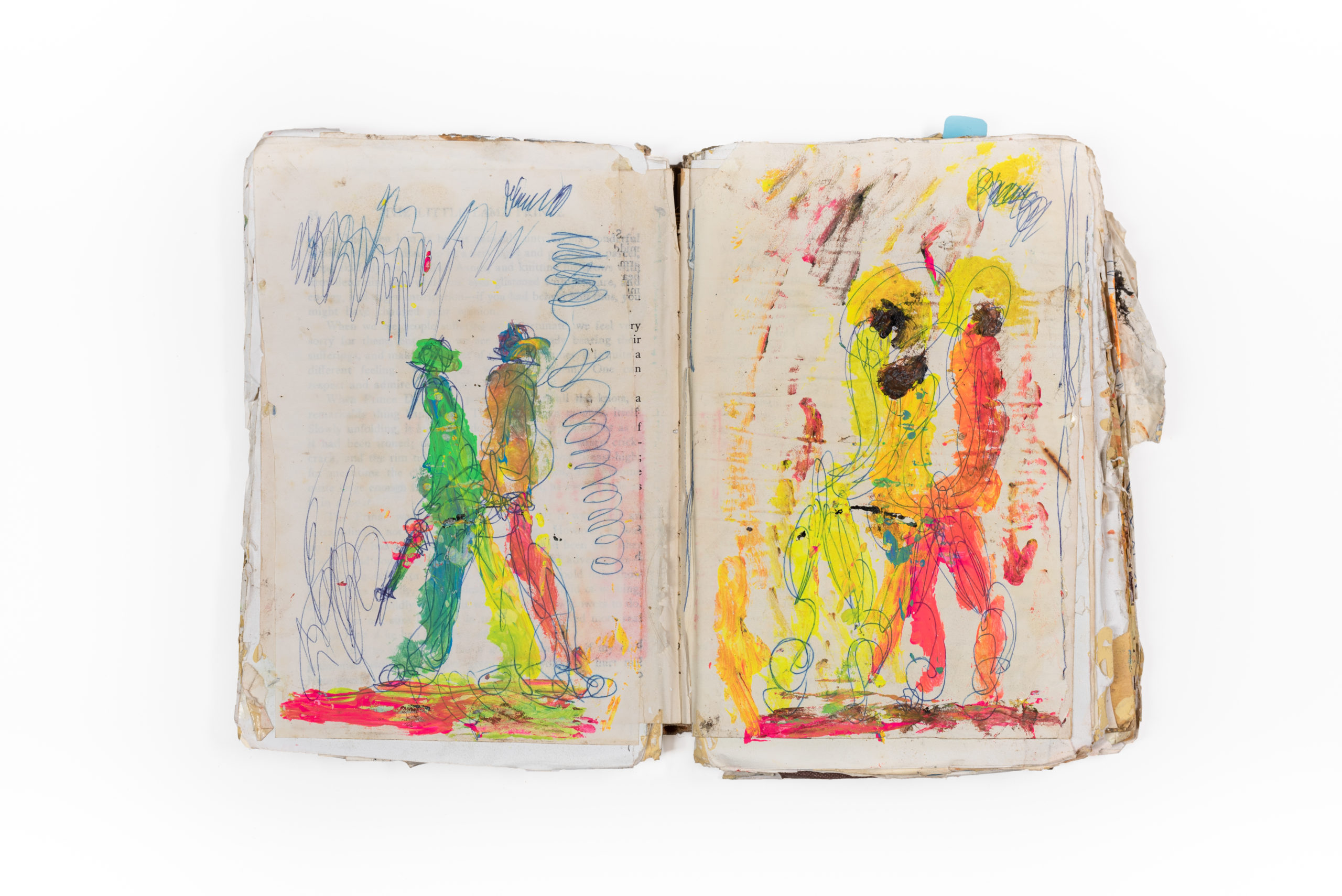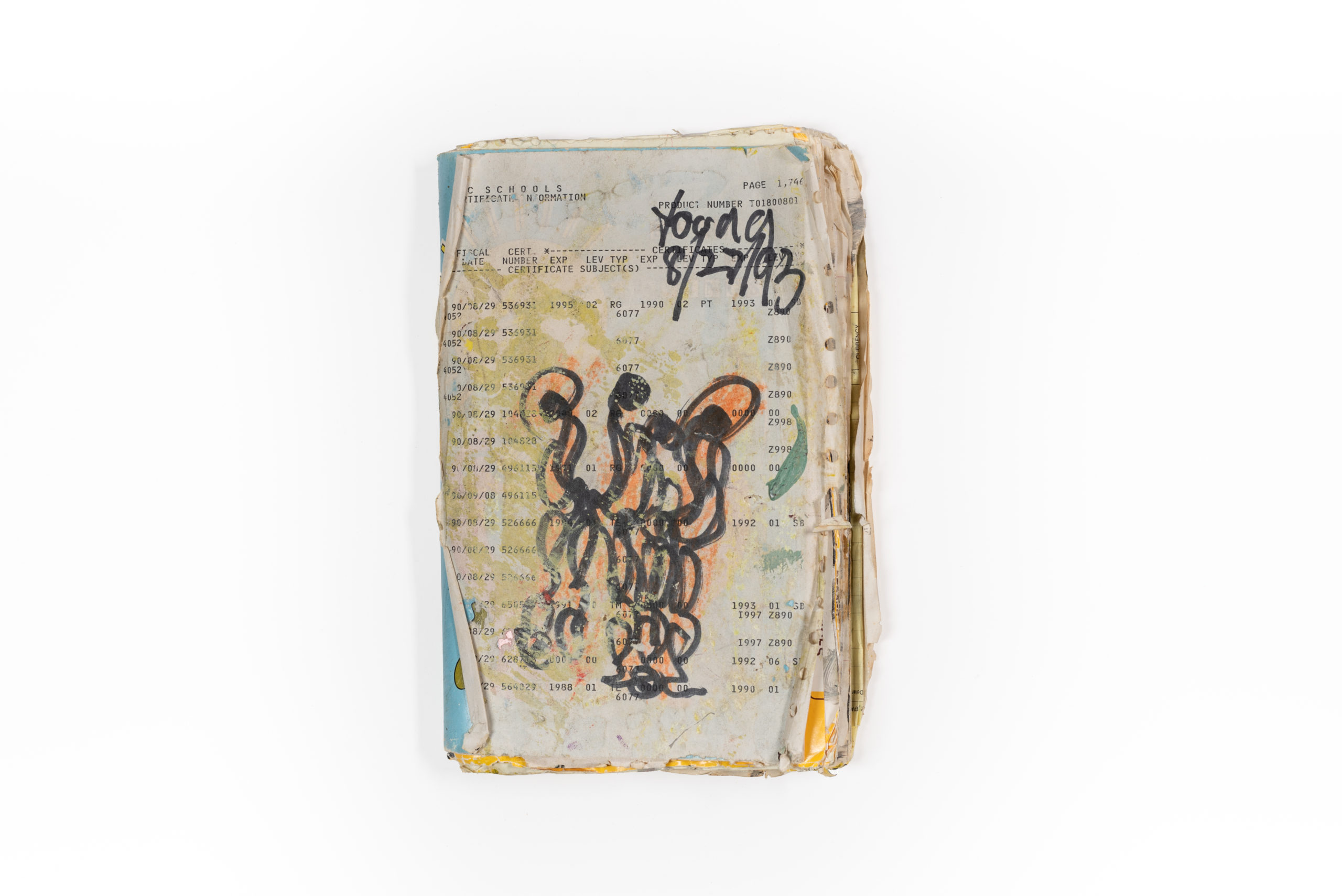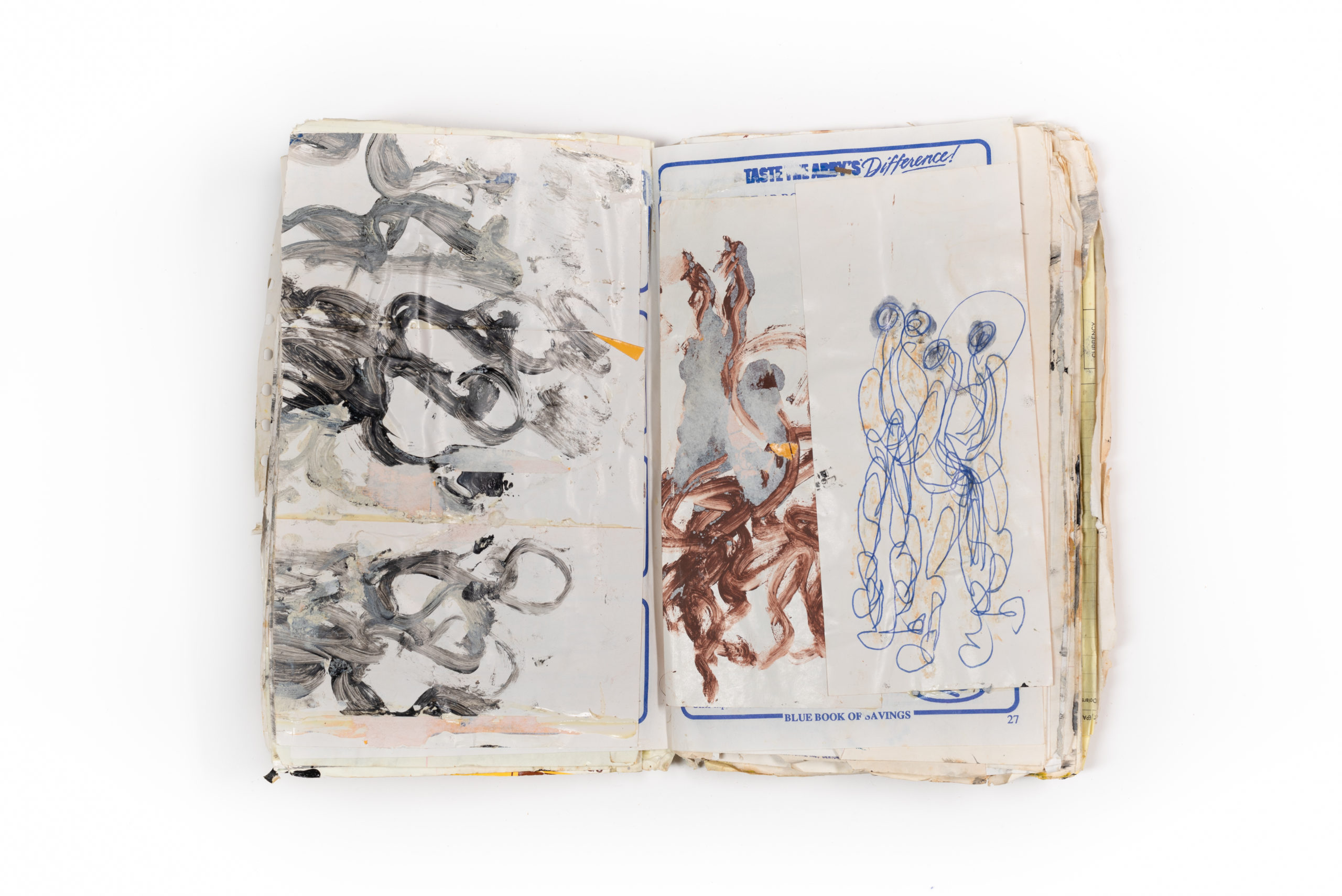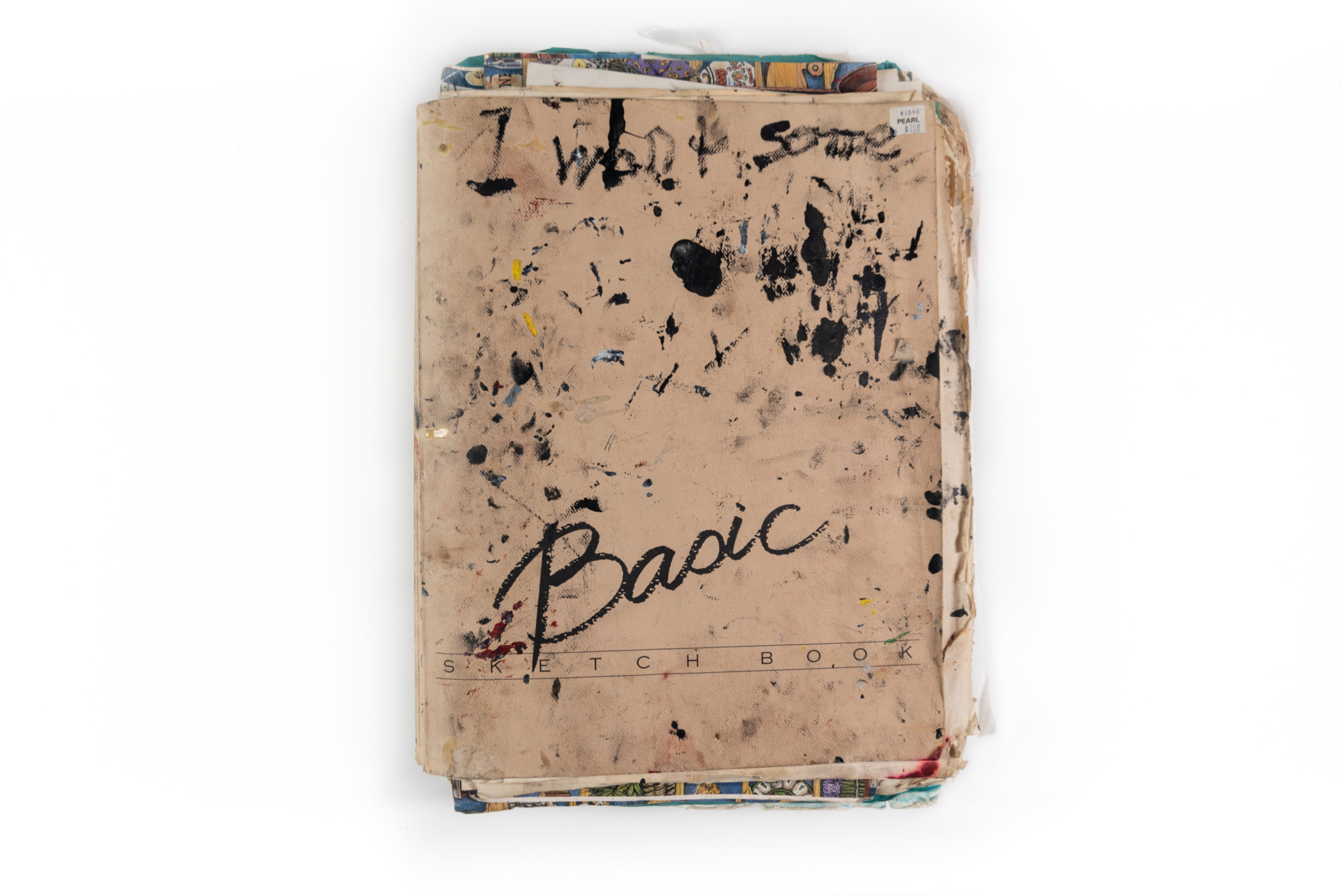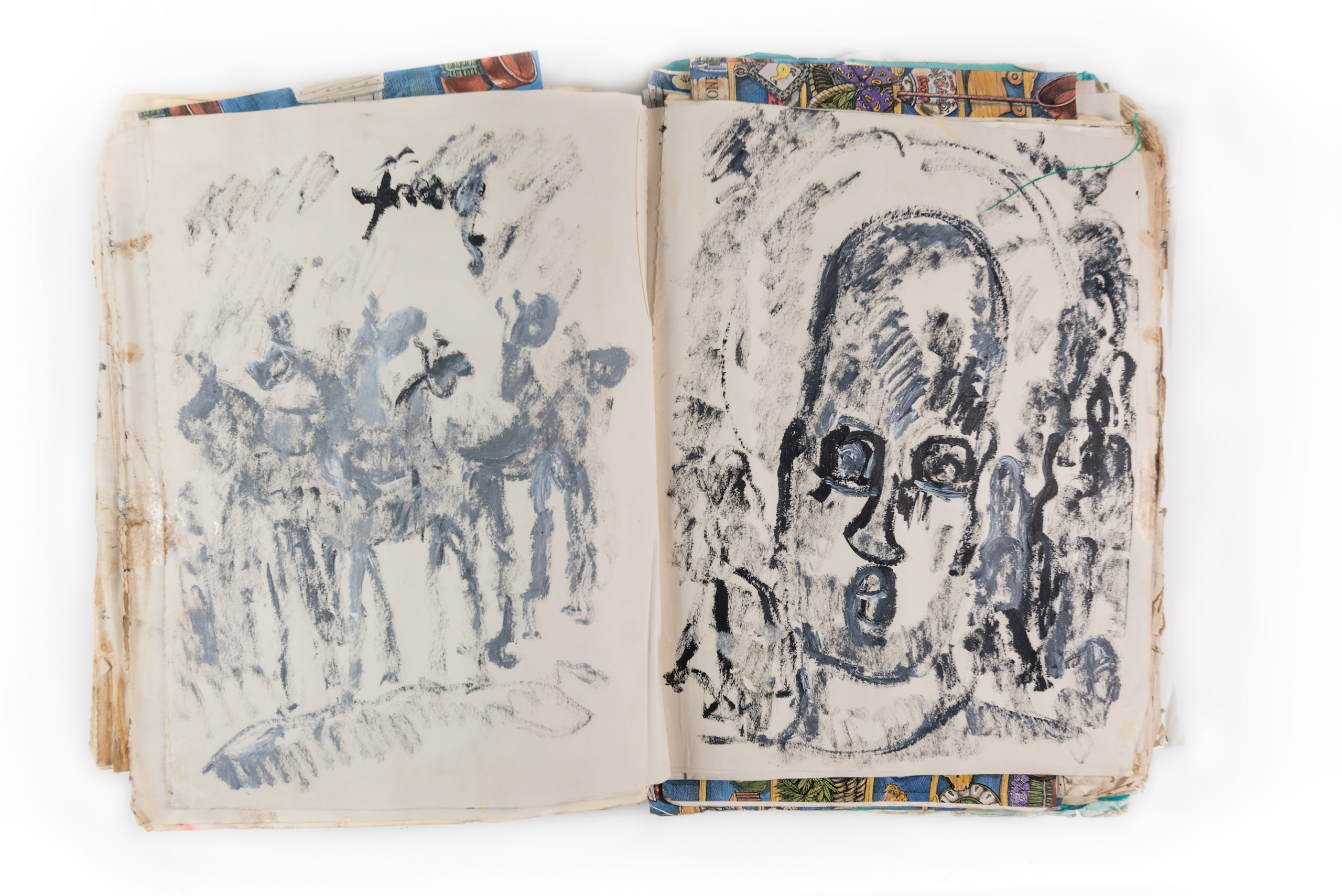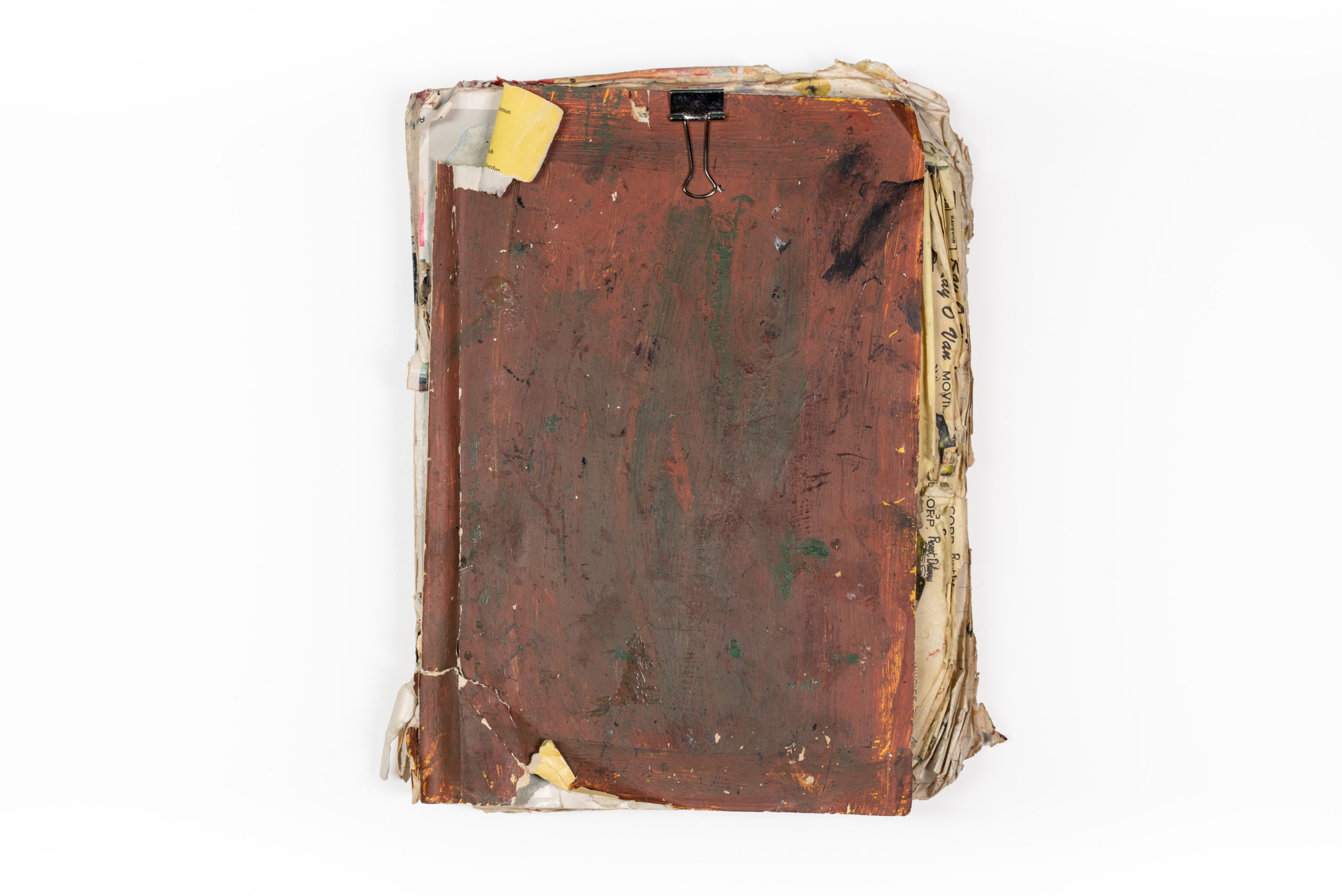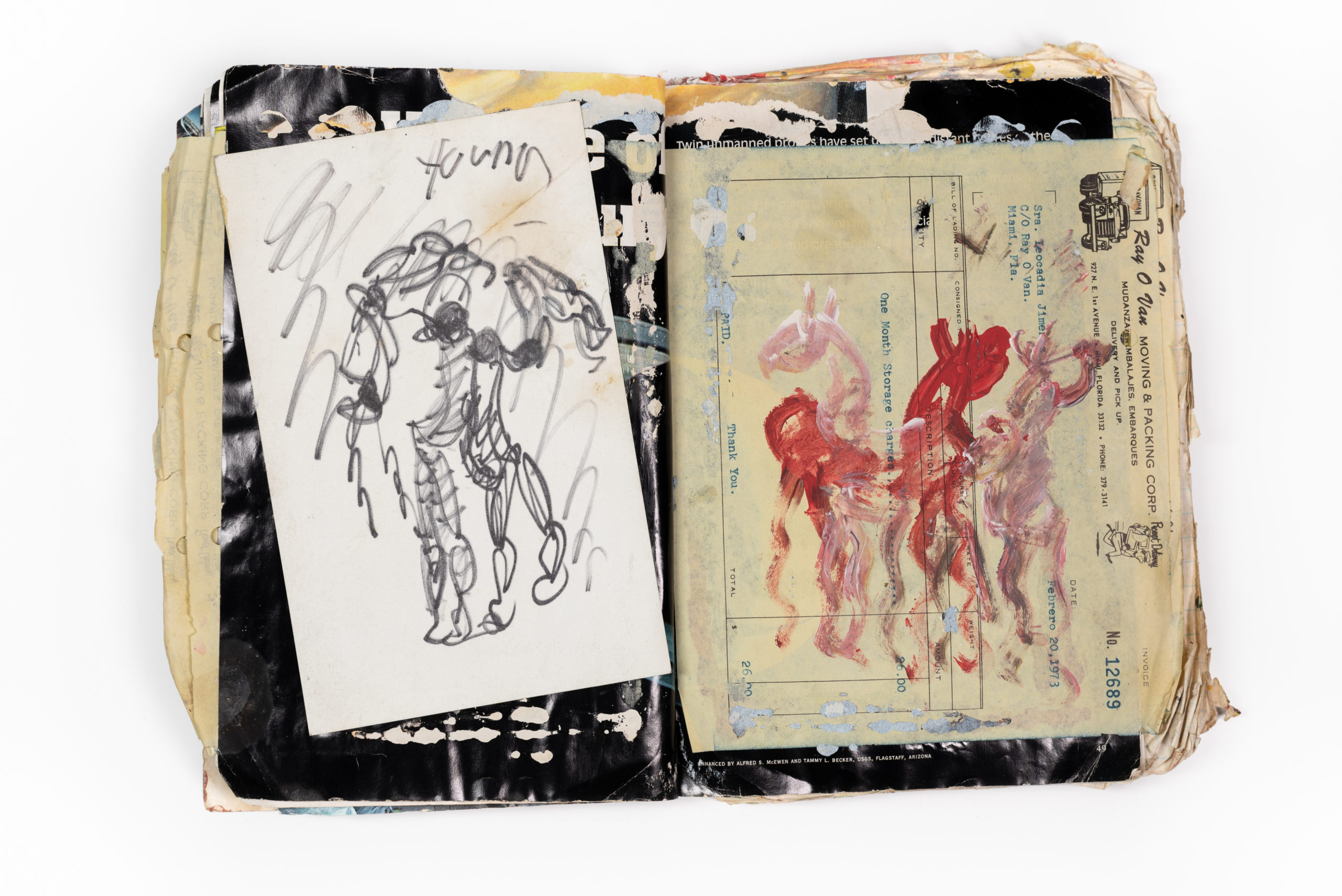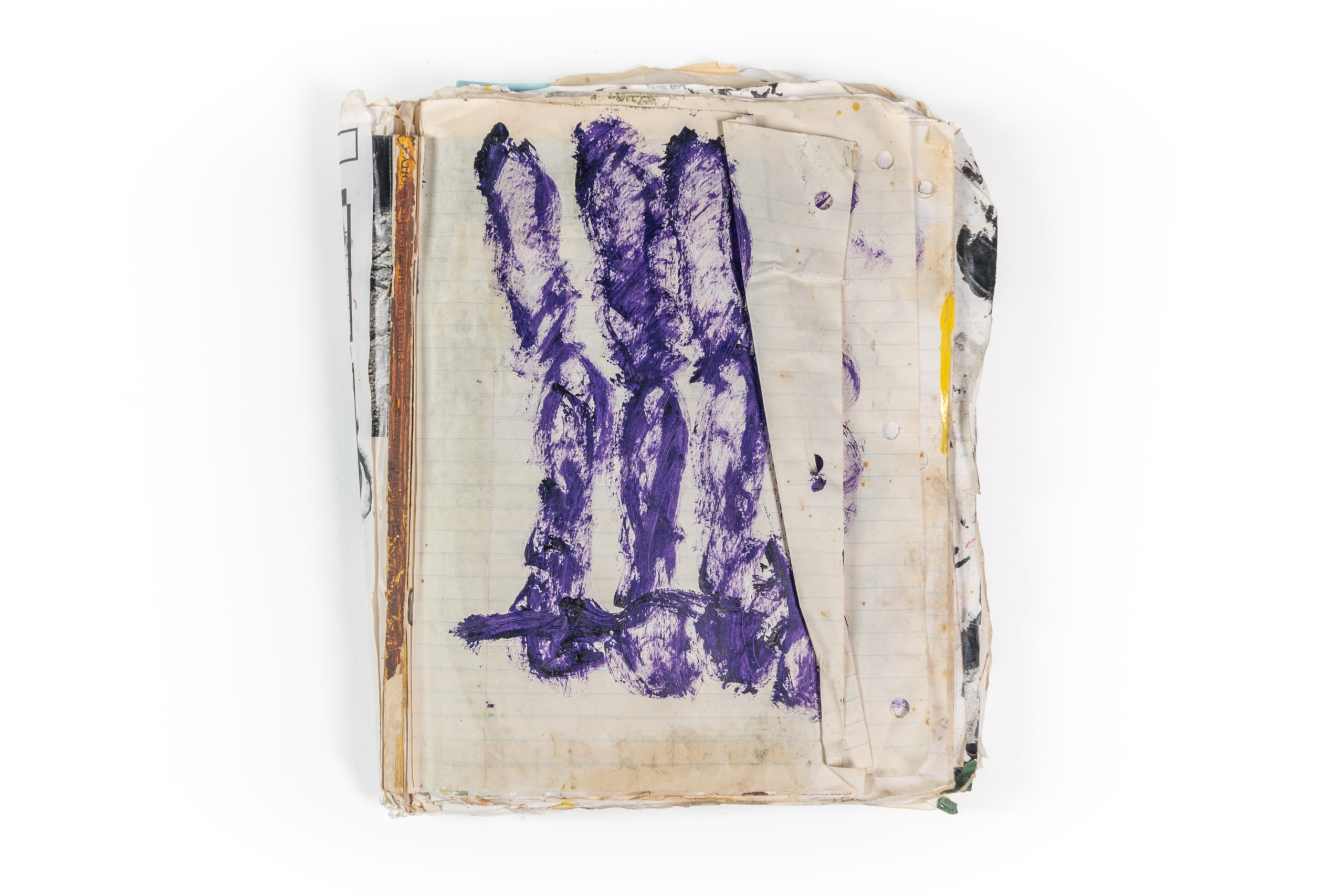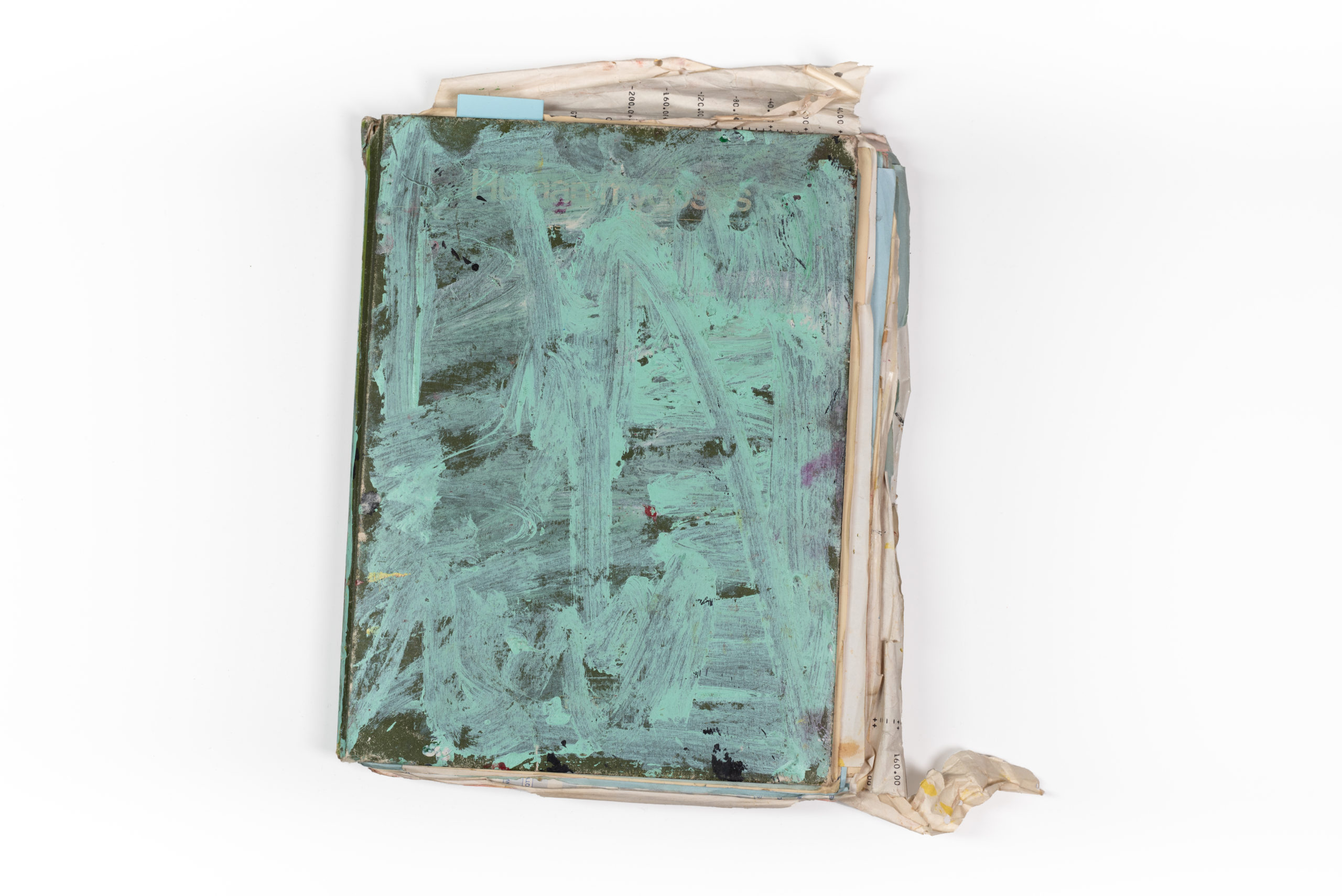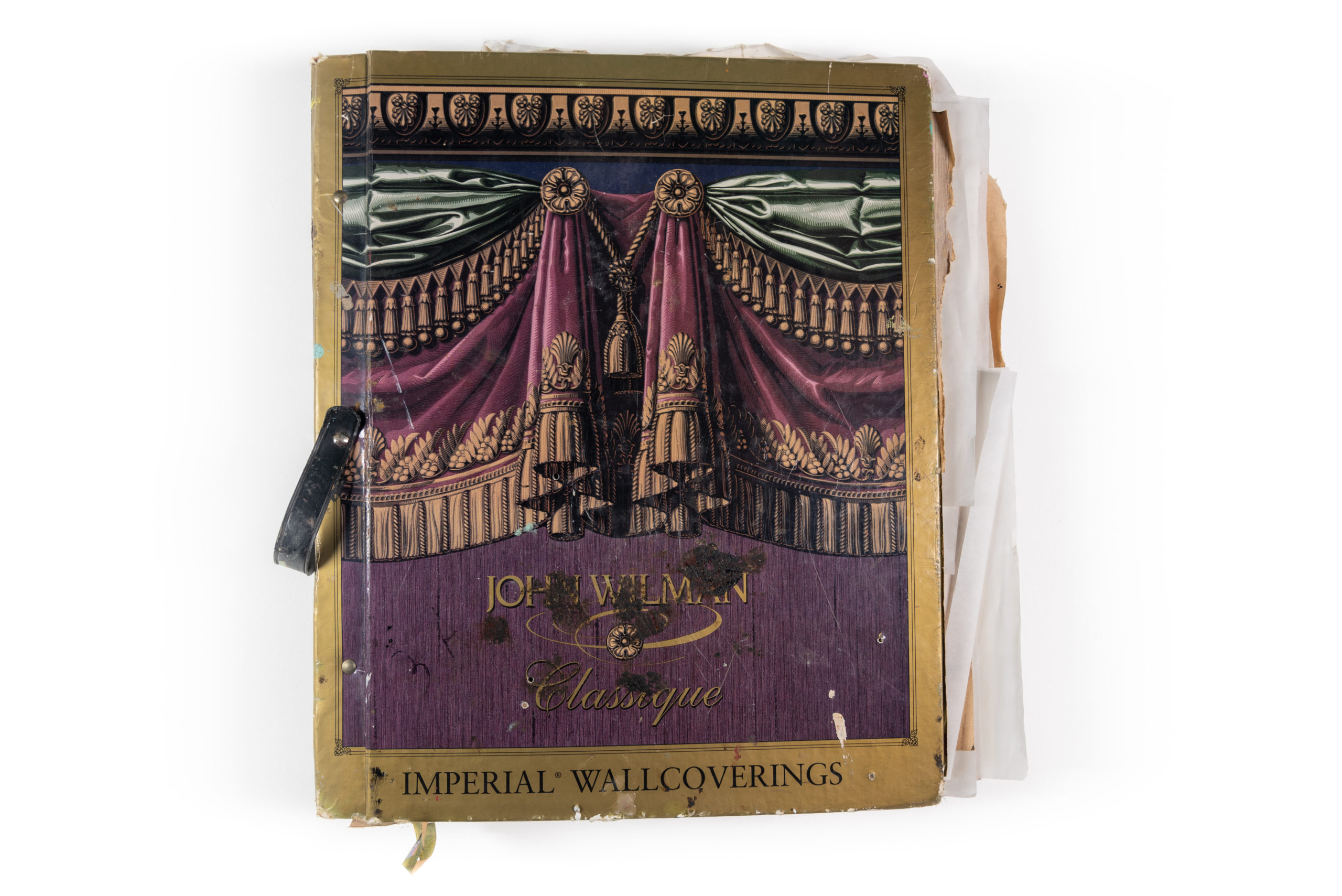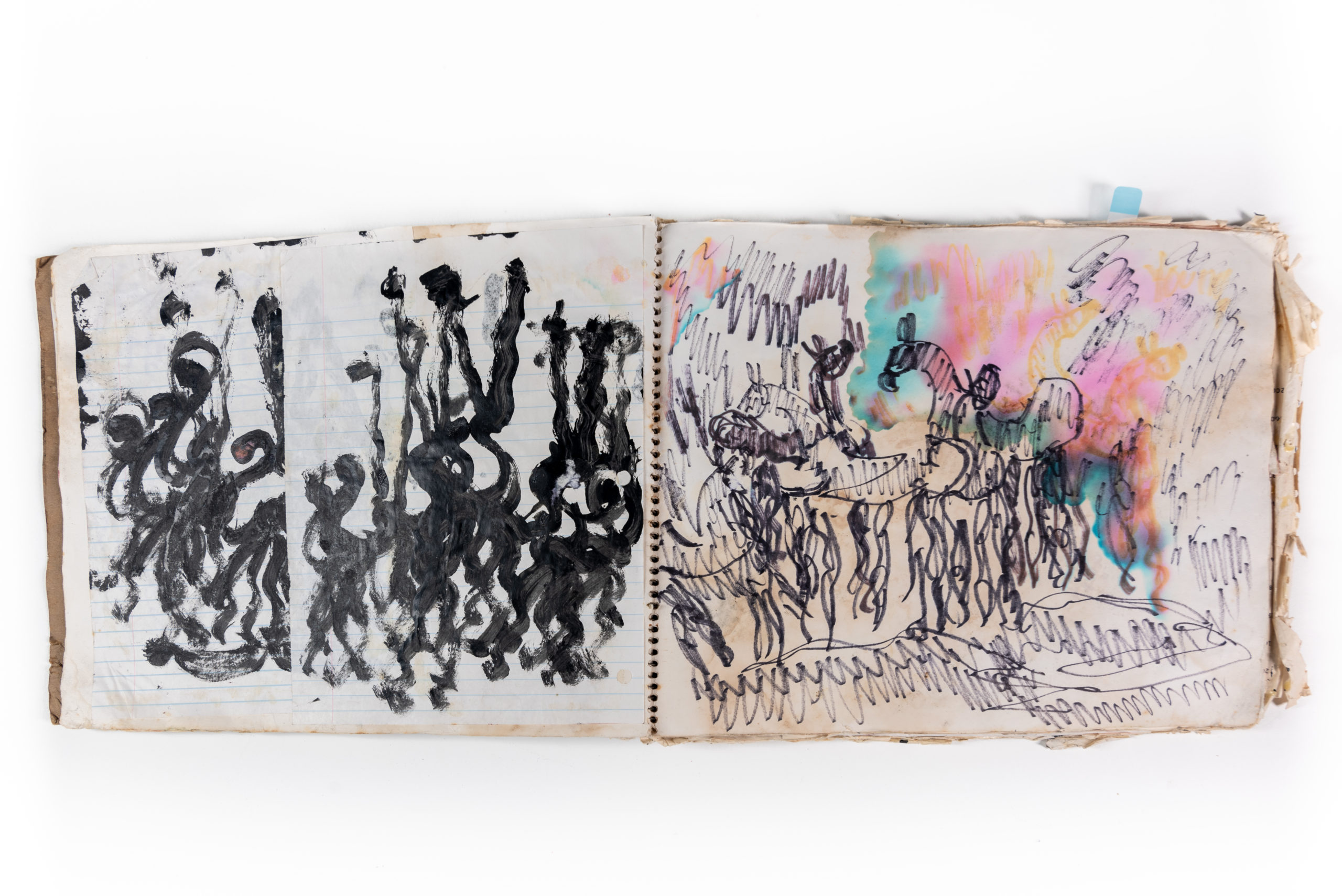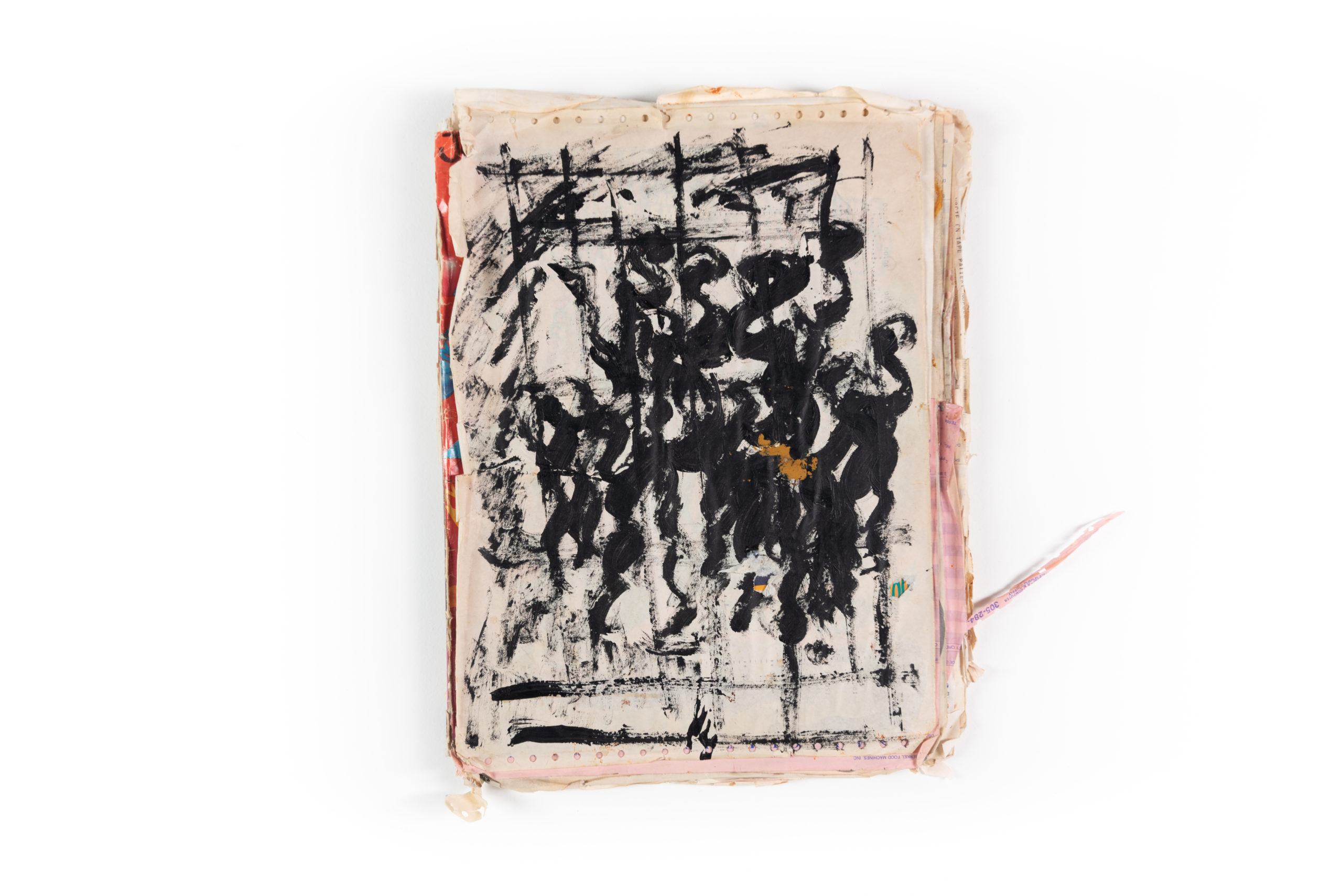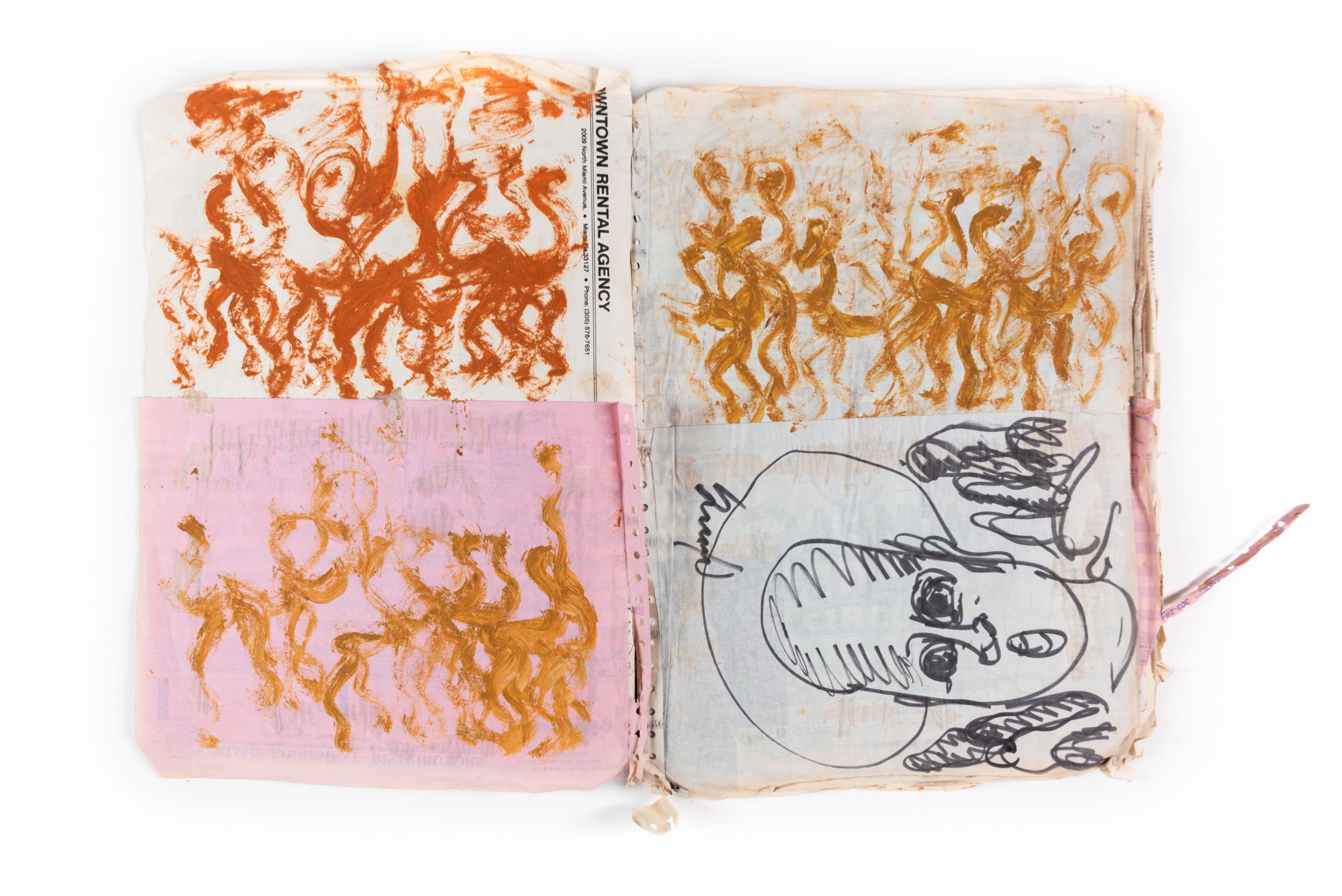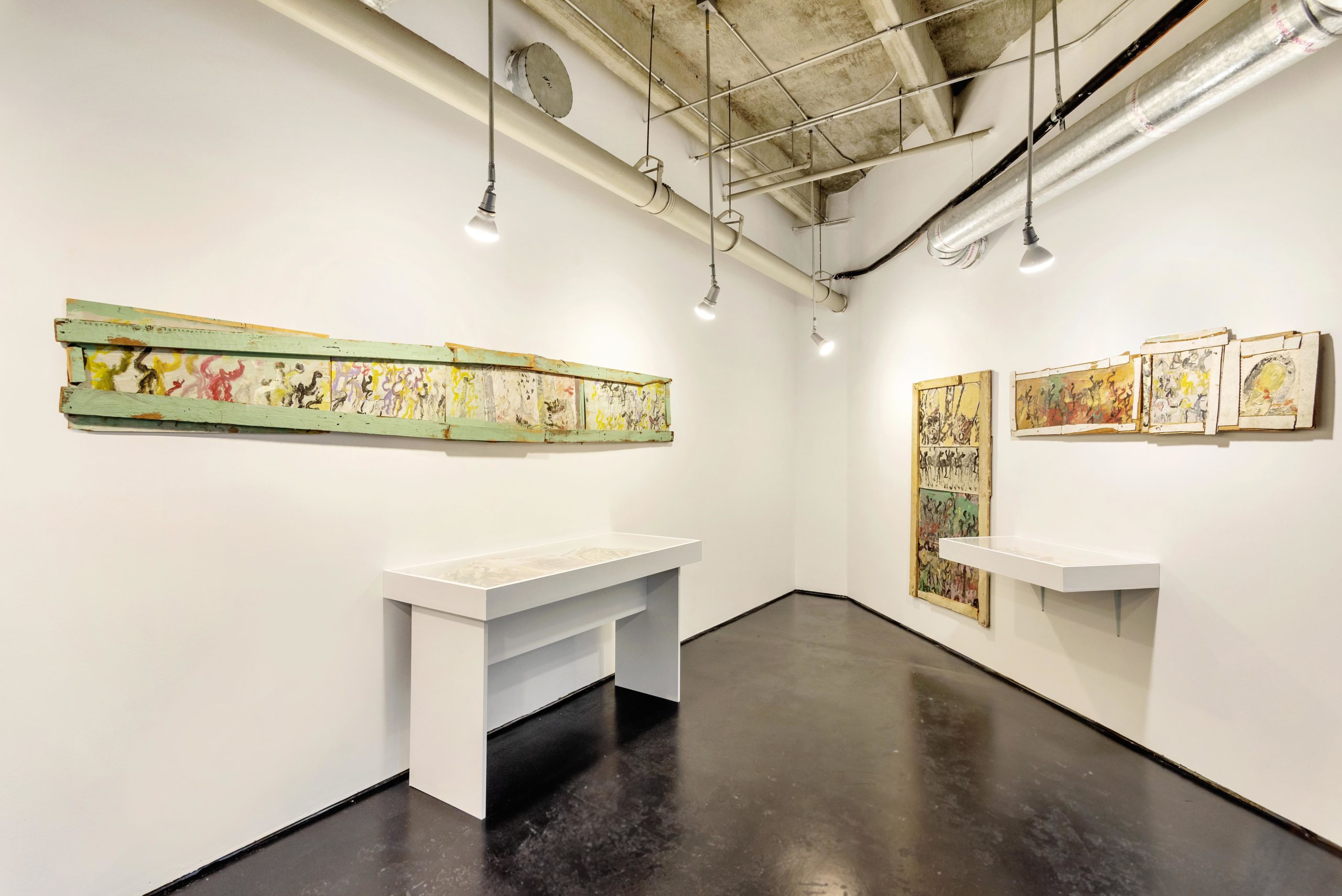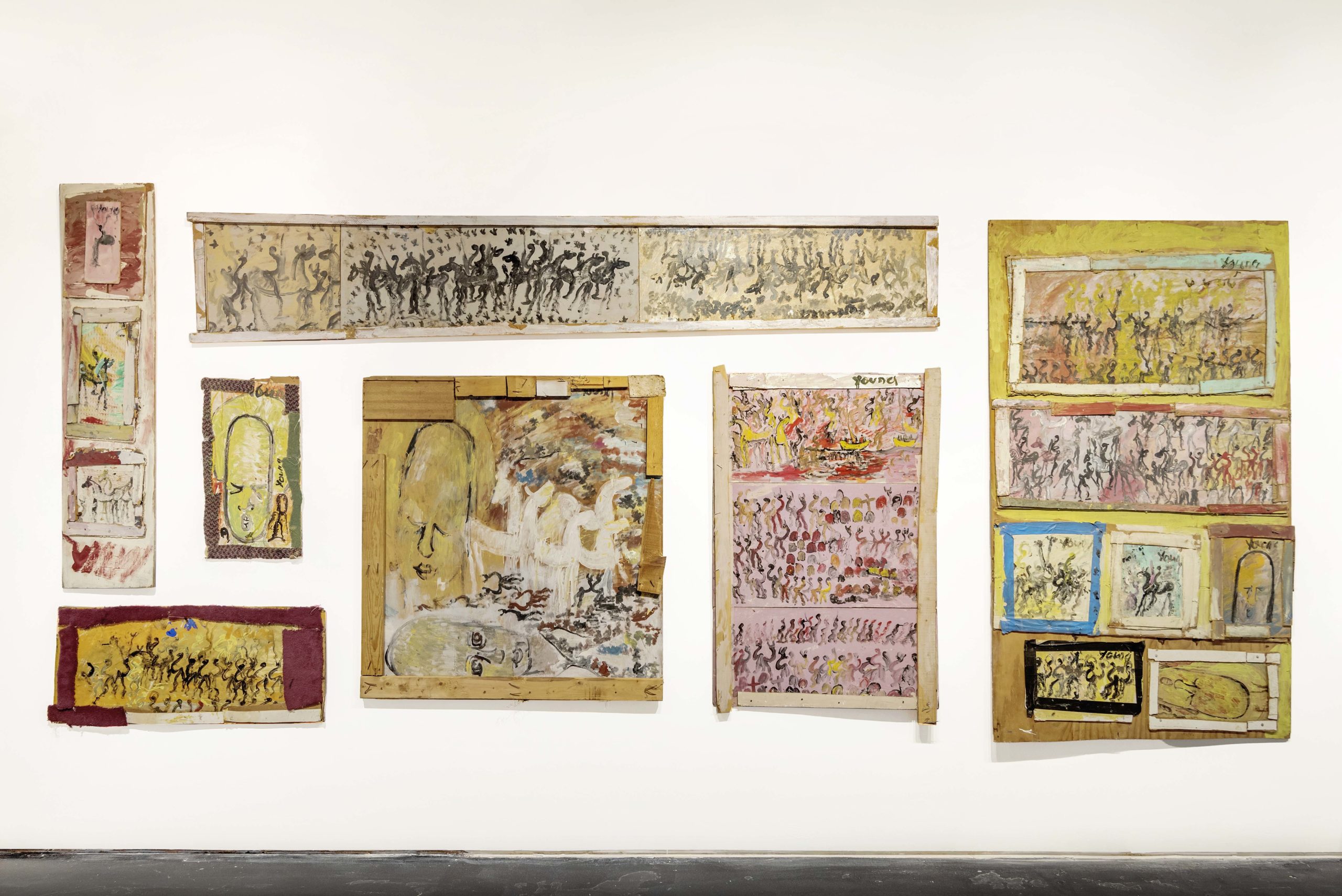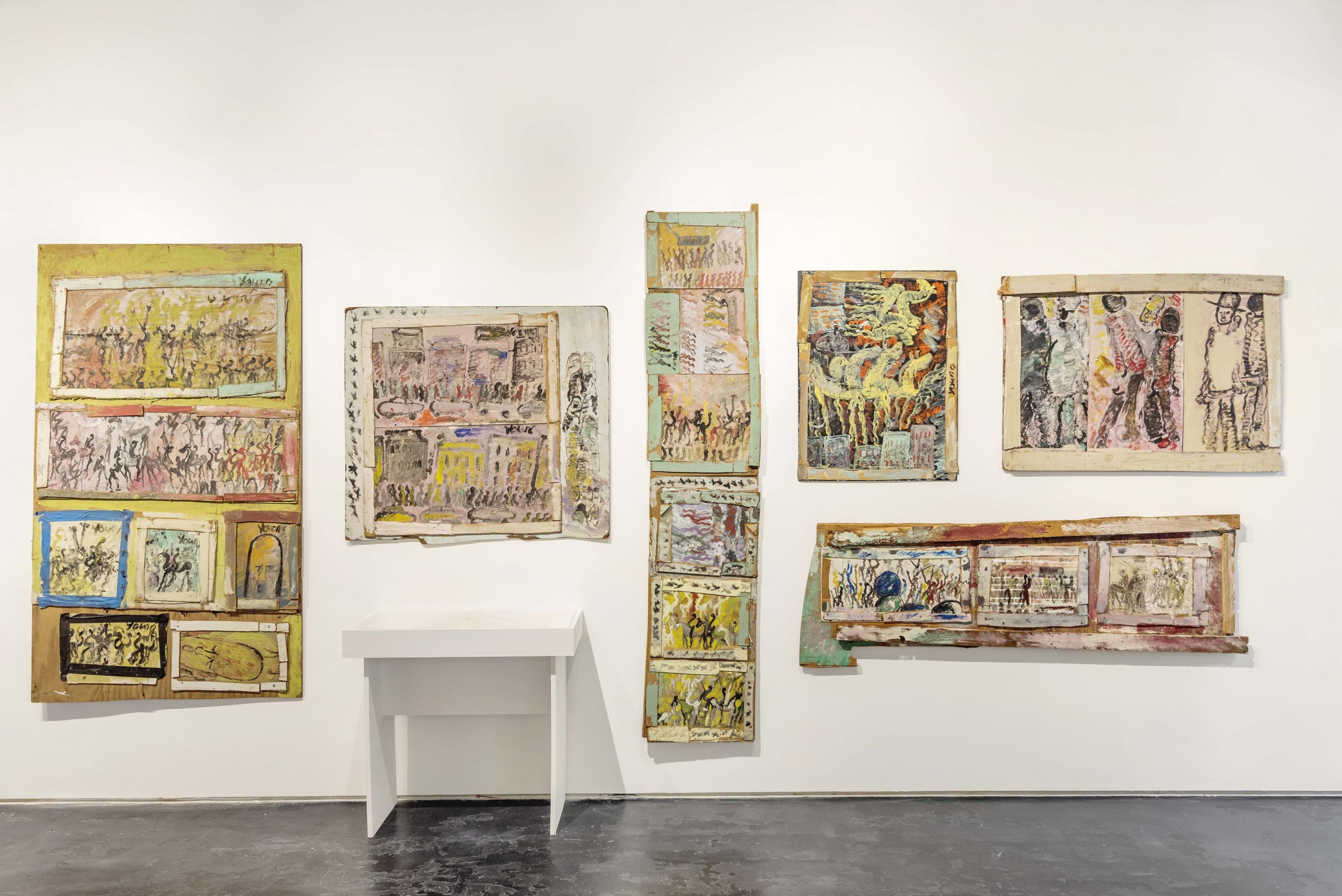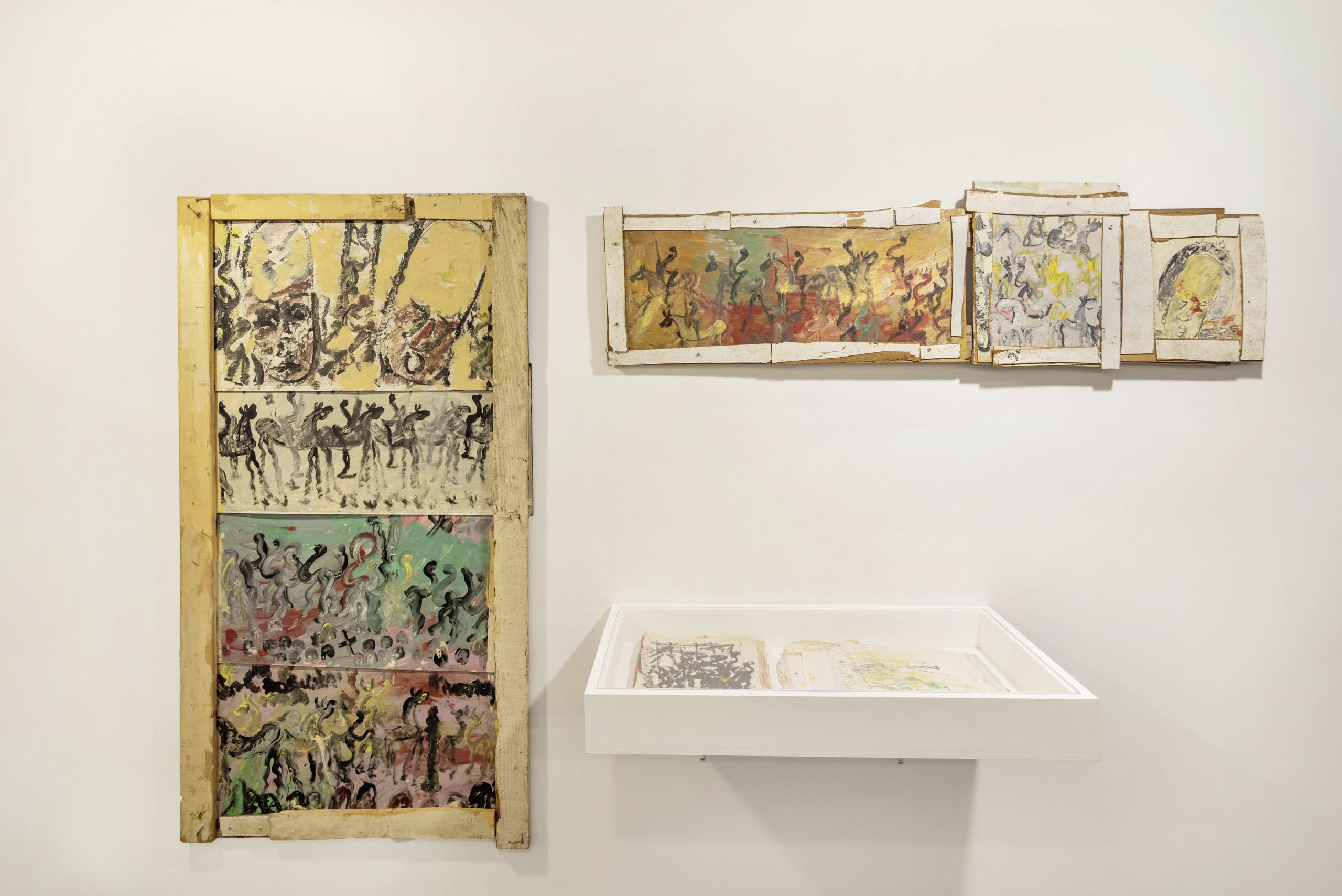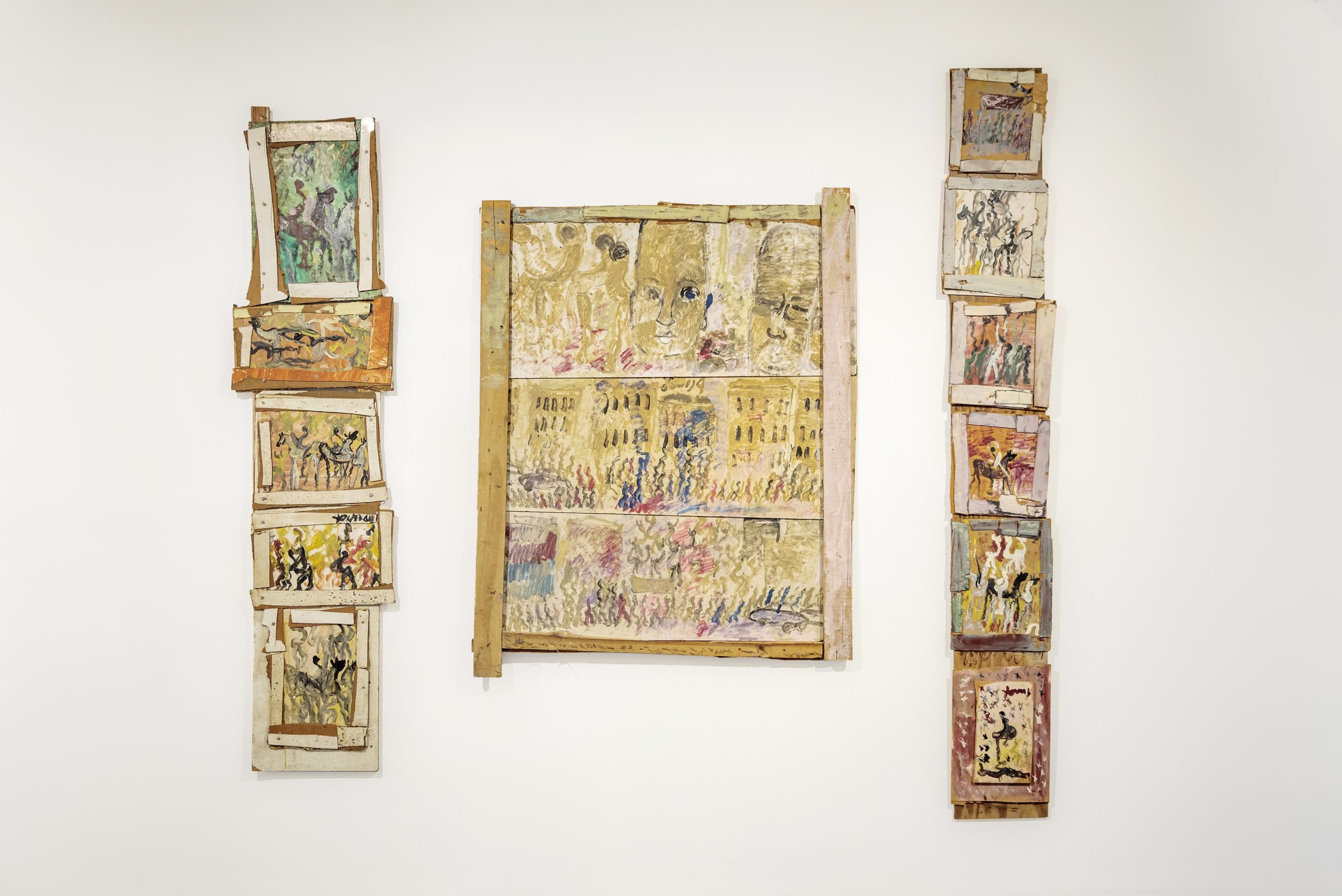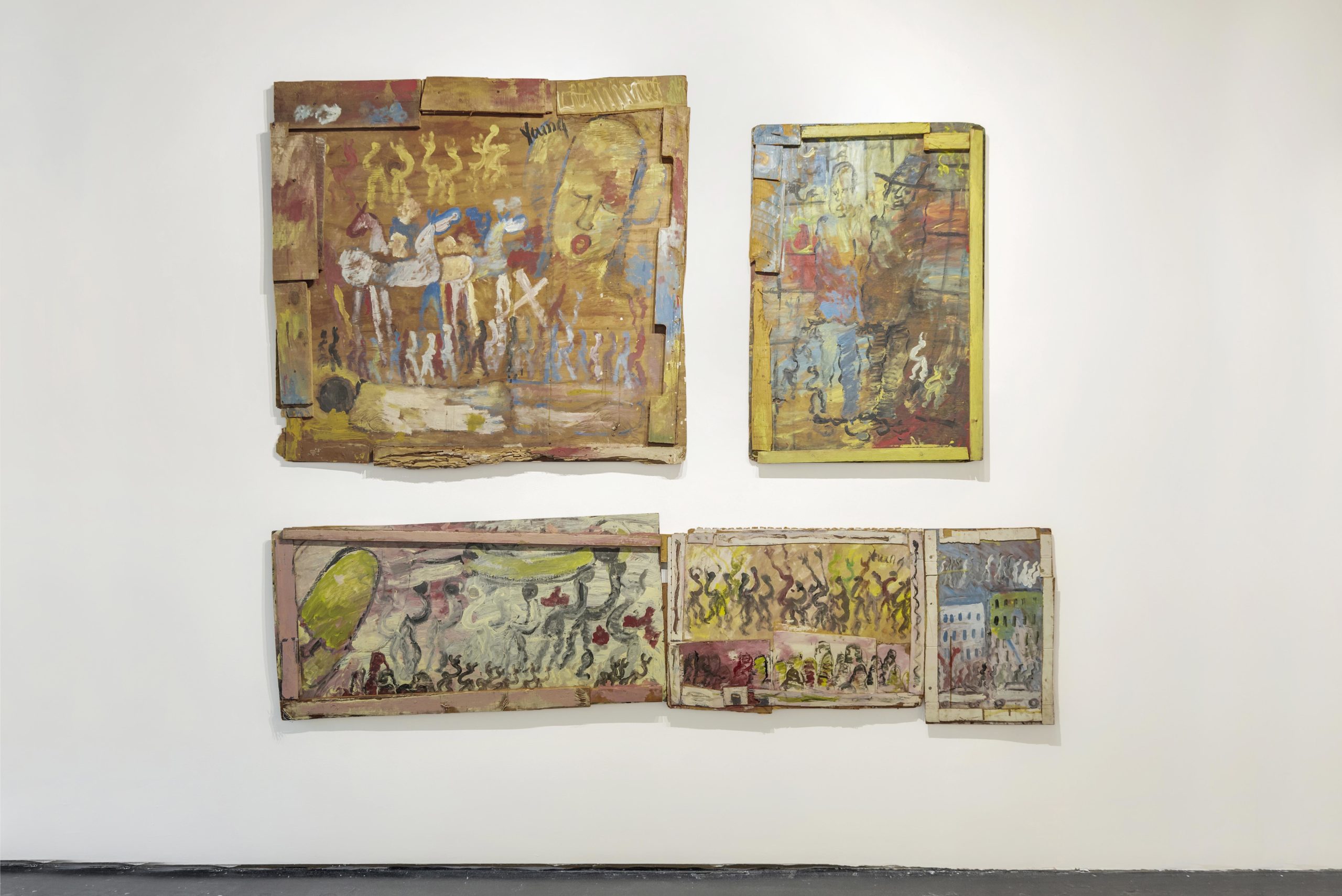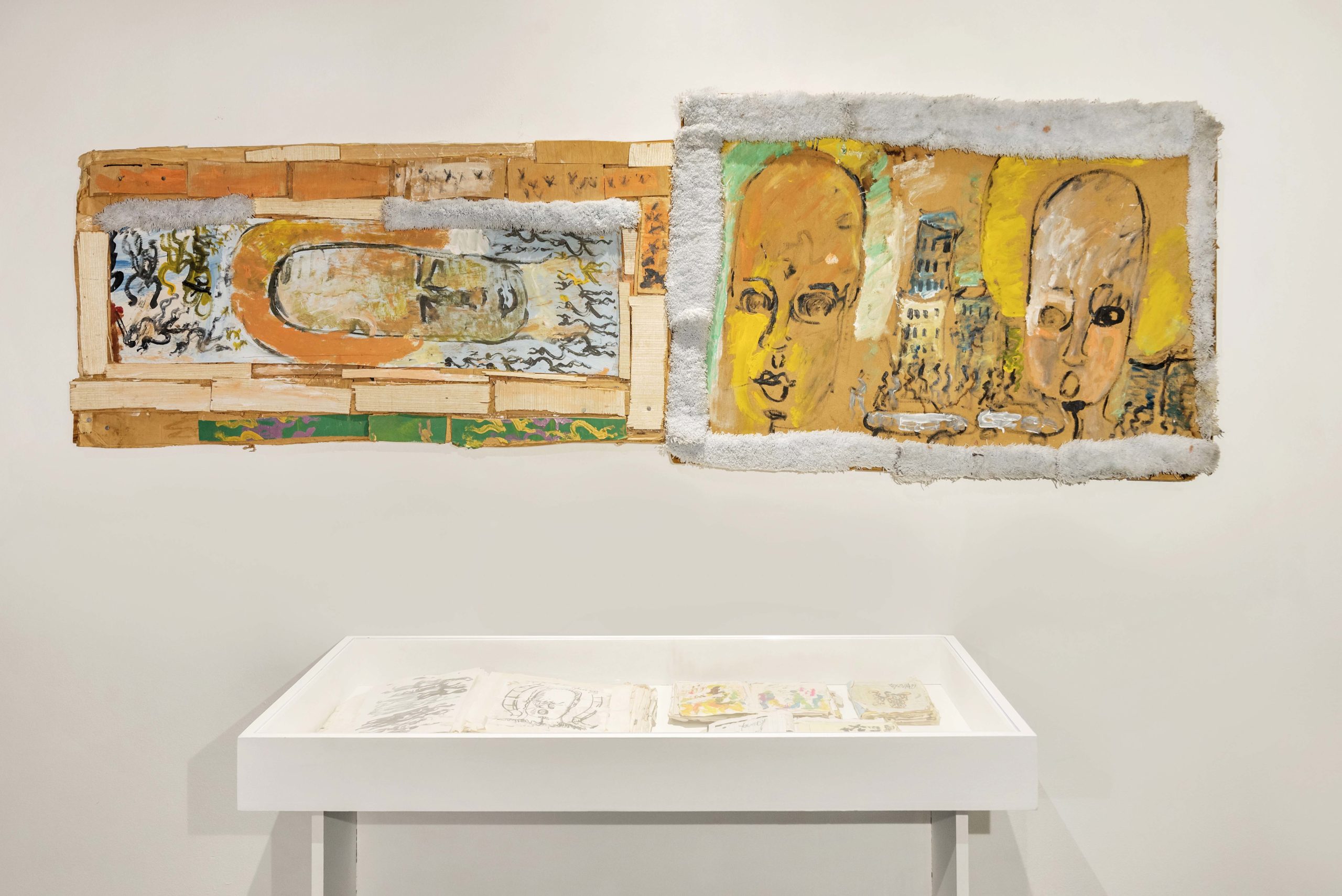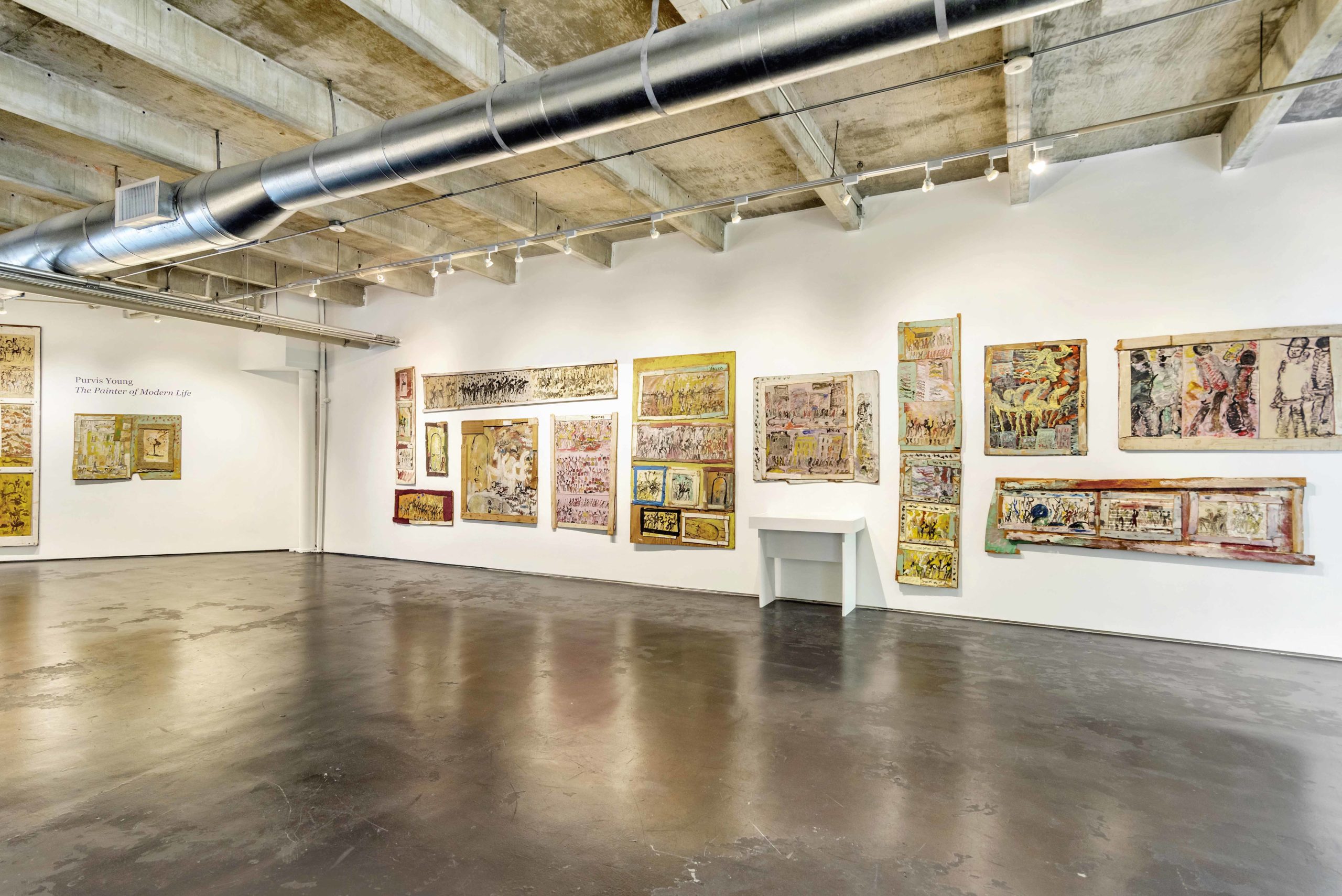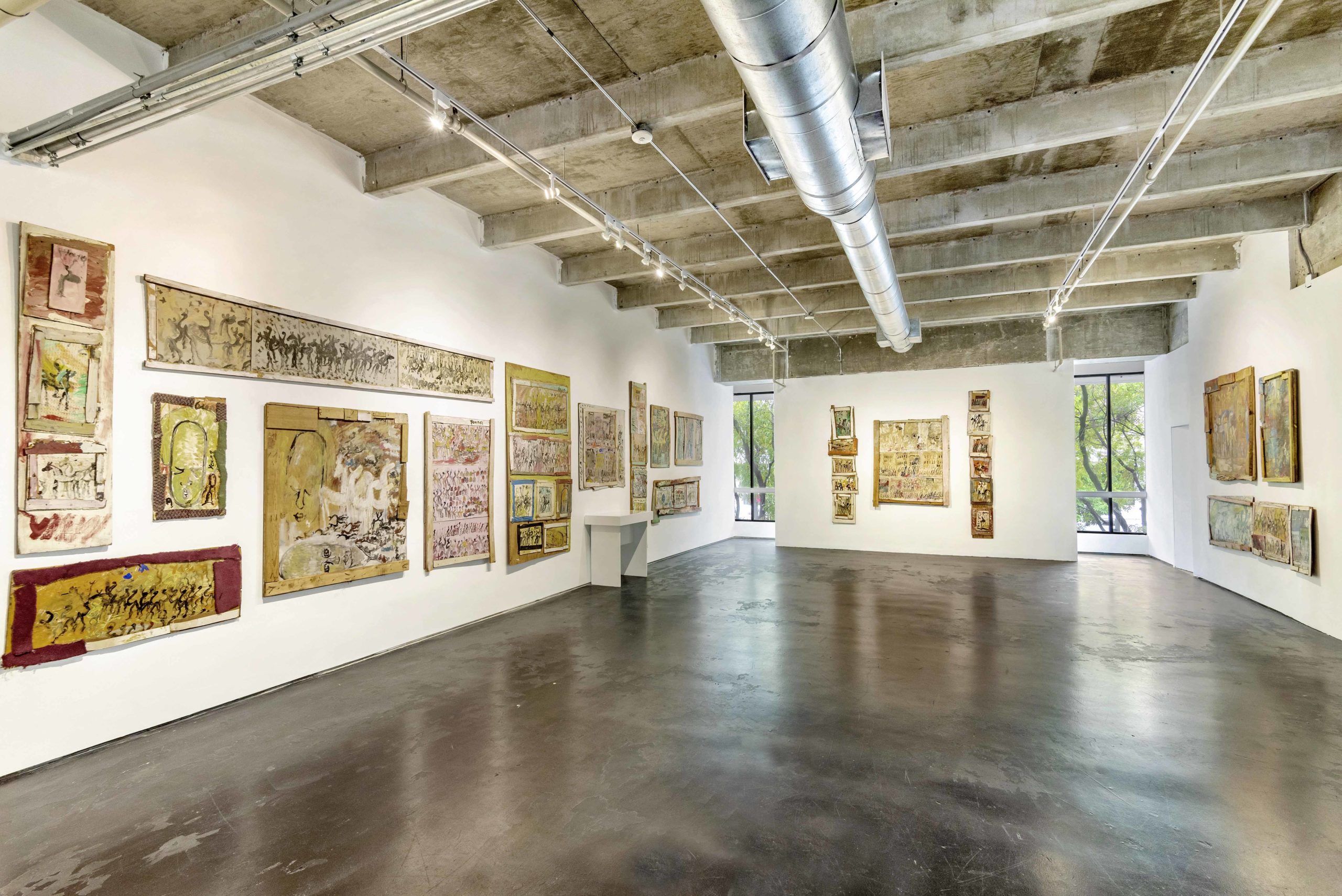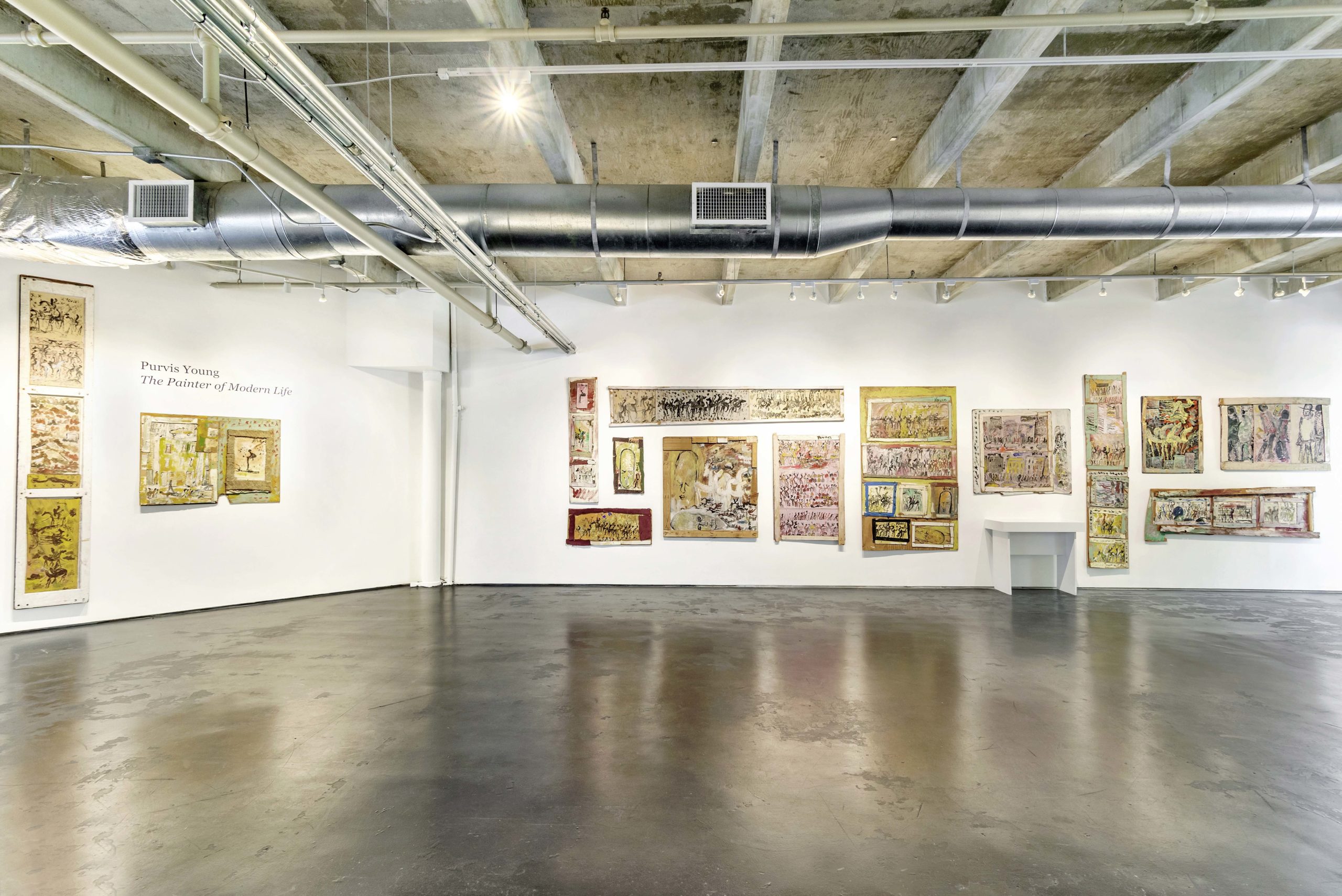The Painter of Modern Life
Purvis Young
David Castillo presents Purvis Young: The Painter of Modern Life, an exhibition of twenty-five paintings and eleven books by the late artist; a collection of significant examples of Young’s oeuvre that have never before been publicly exhibited.
Over the course of his forty-year career, Purvis Young’s artistic practice developed across a distinct visual language, bringing together materials in layered compositions of found objects and painted scenes that were evocative of the artist’s inner visions and outward realities. Straddling years of civil unrest which came to shape the artist’s experience of Miami—where he was born and lived through the end of his life—Young’s prolific output charted scenes of protest, war, mourning, boatlifts, and prison life interspersed with angelic apparitions, horses symbolic of freedom, and pregnant women whose presence signaled renewal and rebirth. Inspired by the Freedom Wall of Detroit and the Wall of Respect in Chicago, Young was renowned for his Good Bread Alley mural (1972 – 75), a project where the artist transformed the sides of boarded-up buildings in the predominantly Black Miami neighborhood of Overtown into an expansive artwork comprising hundreds of paintings that he himself made. Young recognized the aspirational and dignifying power of art to reflect possibilities for alleviating the ills of society; and it is in light of this that Young approached art-making as a means of catharsis and escapism both for himself and for anyone who might bear the iniquities of modern life.
Young’s practice made use of often discarded materials gathered from the neighborhoods in which he lived. Scraps of wood and Masonite, political posters, bits of carpet, books, and other items form the varied structures of his painted works. His assemblages take myriad forms, and the artist resourcefully adapted them based on the materials that were available to him; in this way, the structures of his paintings reflect the immediate conditions he found himself living and working within. Young’s paintings not only offer depictions of modern life but physically contain pieces of its reality and circumstance.
The materiality of Young’s paintings give way to subject matters that both chronicle and reject the abject conditions of violence, grief, and precarity that the artist saw reflected in the current events of his time. Many of his paintings relate scenes where crowds—people represented in singular, expressionistic brushstrokes—stand in demonstrations on city streets, fight in battle, or march in funerary processions. These crowds mark the body politic, everyday people, caught in the sometimes uncomfortable or painful circumstances of daily living. In these scenes, however, Young often portrays angels or other ethereal, haloed beings watching over the gathered people; these figures recur throughout the artist’s body of work and point towards the possible avenues of assuaging the ills that afflict the crowds and the society in which they live. In these characterizations of the divine, Young straddles reality and the supernatural, orchestrating compositions which document social realities in an almost allegorical capacity.
In depicting the lived experience of the world around him, and his loose, urgent brushwork, Young can be said to have painted in the legacy of the Impressionists; capturing painted snapshots of the city he knew. Whereas the Impressionists marveled at the speed of an always-changing, modern city, Young took an approach that reflected on the immediate needs of his community and imagined the city’s potential to harbor a better life for those struggling.
In his essay “The Painter of Modern Life” (1863), for which this exhibition is titled, Charles Baudelaire writes of the flâneur, a voyeur of modern life who is immersed in the movement and action of the city while remaining hidden from its immediate circumstance. The flaneur became a central motif of the Impressionists, a distanced observer whose point of view framed the way in which many painters of the late 19th century depicted the city and the lives and events that unfolded within it. While the flaneur takes in the city with cool detachment, Young’s paintings respond in empathy. He was a painter of modern life who was himself immersed in the troubles and anxieties of living within an urban setting very much removed from the one faced by Baudelaire’s flaneur.
The histories, figures, and symbols represented in Young’s practice continue to find renewed relevance today, decades removed from their original contexts. Young often painted scenes of prison, violence, and death, reflecting their effects within the predominantly Black communities of Miami in which he lived. These conditions continue today throughout the United States; Young’s scenes of mourning crowds, cemeteries, and protests recall the urgency and activism of our contemporary landscape. In many ways, Young’s practice is a time capsule of a past whose legacy stretches into the present, evincing his place as a painter of modern life well beyond his time.
The works in Purvis Young: The Painter of Modern Life are drawn from a single private collection, acquired directly from the artist. Research on Purvis Young’s life and work for this exhibition was facilitated by a fellow artist and friend of the late artist.
Purvis Young (1943 – 2010) was born in Miami, FL. Throughout his prolific career, and posthumously, Purvis Young has exhibited works internationally and nationally. His work has been presented in exhibitions at Detroit Institute of Arts; Studio Museum in Harlem; Smithsonian American Art Museum, Washington, D.C.; Milwaukee Art Museum; Wexner Center for the Arts, Columbus, OH; American Folk Art Museum, New York; Schomburg Center for Research in Black Culture, New York; Birmingham Museum of Art, Birmingham, AL, and many others. Young’s work is included in renowned collections of contemporary art, including the Metropolitan Museum of Art, New York; Whitney Museum of American Art, New York; Los Angeles County Museum of Art; American Folk Art Museum, New York; High Museum of Art, Atlanta; Museum of Fine Art, Houston; National Museum of African American History and Culture, Washington, D.C.; Rubell Museum, Miami; Philadelphia Museum of Art; New Orleans Museum of Art; Studio Museum in Harlem; and the Virginia Museum of Fine Art, Richmond, among others.
Curated by Claudia Mattos.
